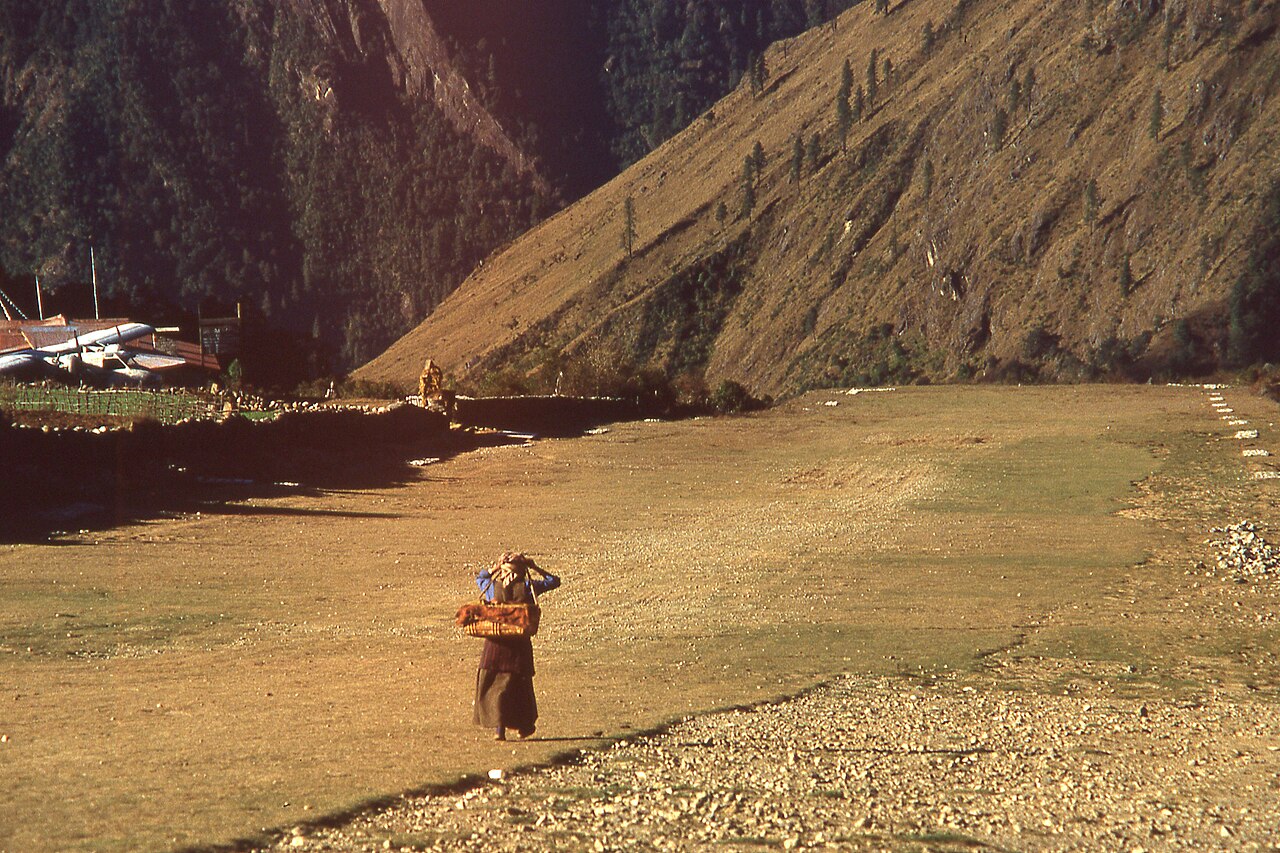In the days of the yore, the cattle would graze in Lukla’s runway, and children would play too. A siren would blow when an aircraft was approached land, and the runway would be cleared off.
Photo: BBLBobby | Wikimedia Commons
Lukla (IARA: LUA, ICAO: VNLK) is recognized, maybe falsely, as the world’s most dangerous airport. “It was the keen ears of a Sherpa who first heard the aircraft coming up the valley and we hastily removed all the children and cows off the runway”, said Sir Edmund Hillary, who played a key role in the airport’s construction.
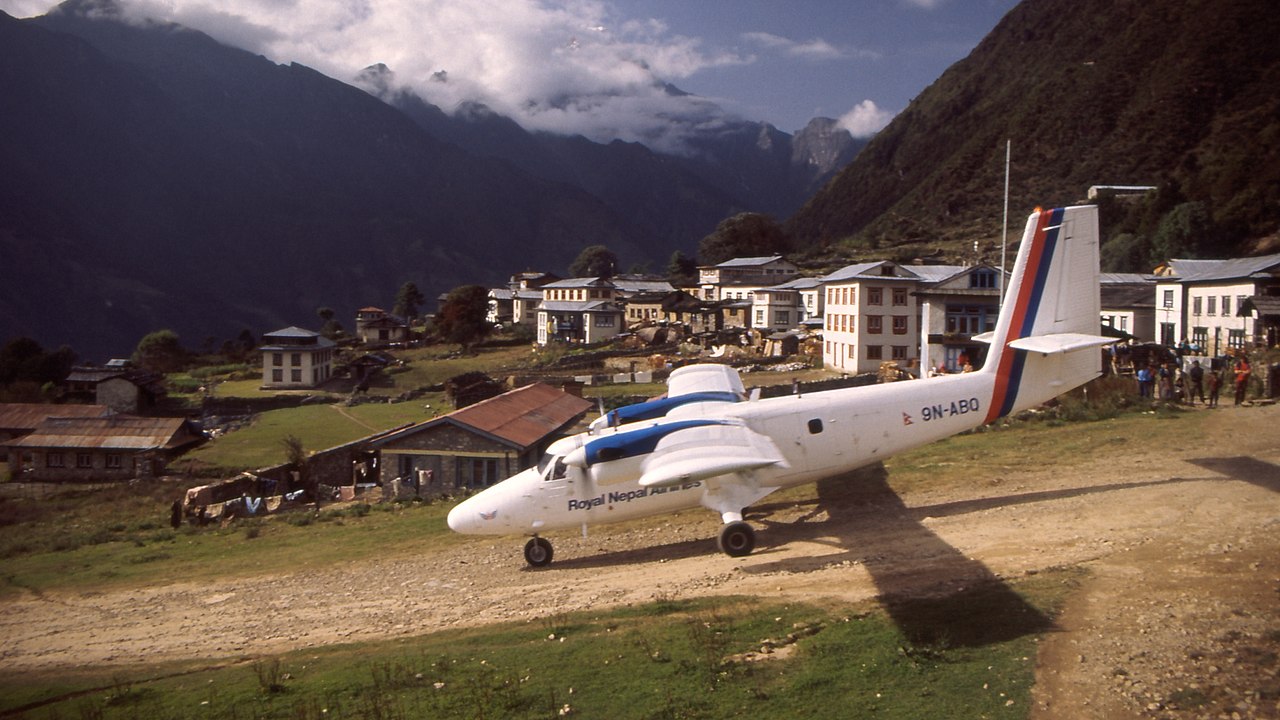
Image: Albert Backer | Wikimedia Commons
Chewang Jangbu Sherpa, who lives in Lukla and owns a lodge there, said the runway was quite uneven before it was paved, which made landings and takeoffs considerably bumpy, and scarier in the past. The runway was paved after the turn of the millennium.
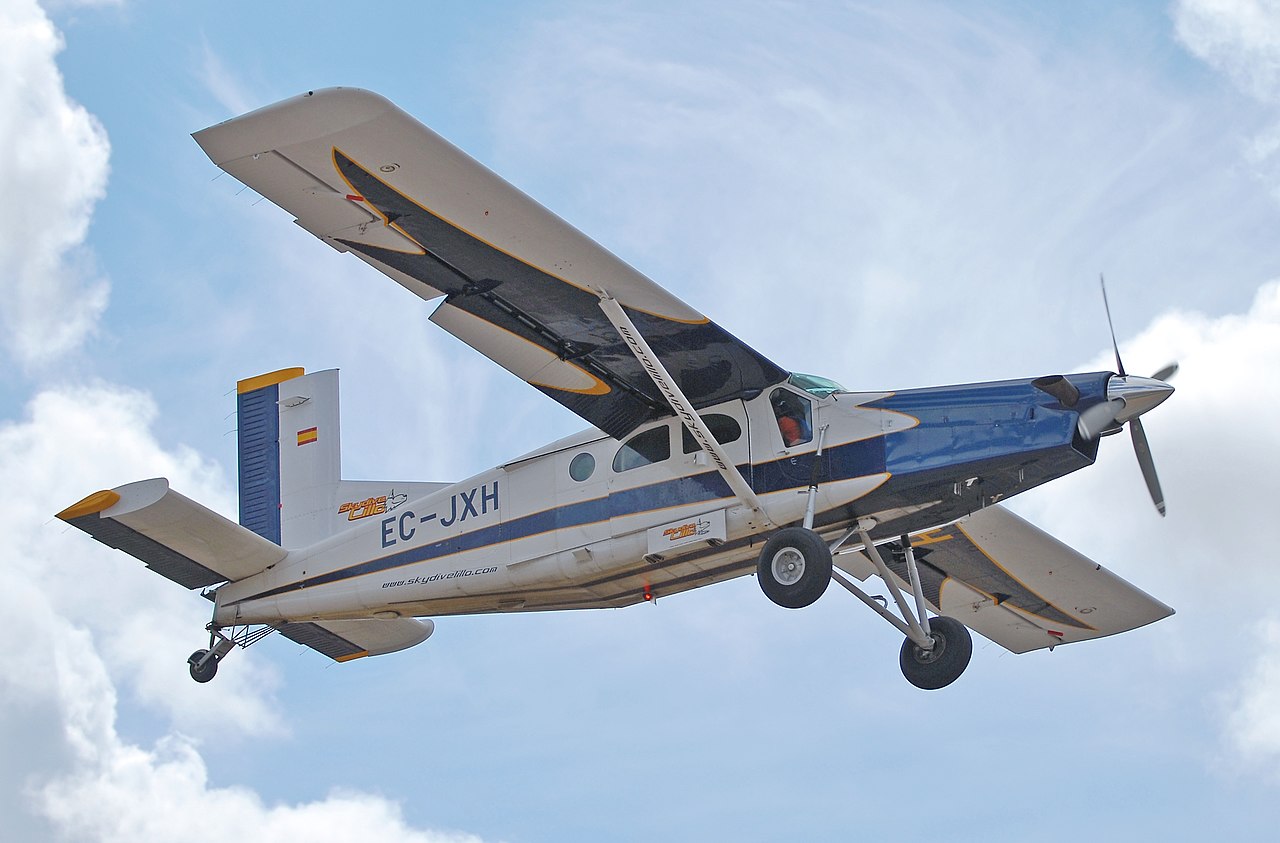
Photo: JDrewes | Wikimedia Commons
According to Hillary’s autobiography, Pilatus Porter PC-6 was the first aircraft to land after Lukla Airport was constructed. Tragically, Sir Ed’s wife and daughter lost their lives when the PC-6 they had boarded to Phaplu Airport crashed near Kathmandu in 1975. The accident highlighted the importance of “Remove Before Flight” tag used in aircraft.
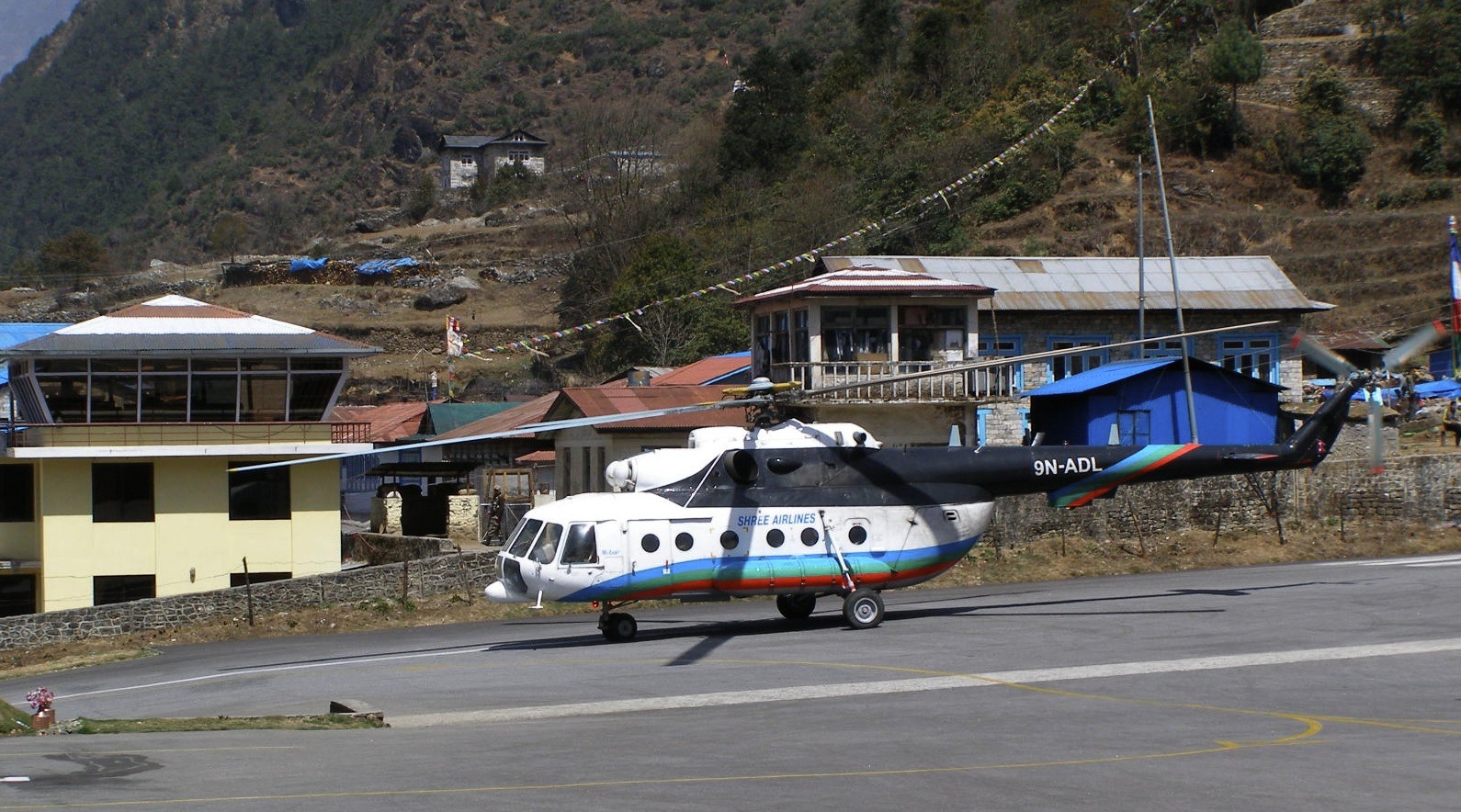
Photo: Bsk77 | Wikimedia Commons
Before the construction of the airport, “a large Russian helicopter” landed in Lukla, said Sir Edmund. Shree Airlines (in Nepal) currently operates Mil-Mi 17s. But it is unlikely that Mi-17 was the helicopter that Ed was referring to, said helicopter pilot Surendra Paudel. He hinted at the possibility of the chopper landing in Lukla before the construction of the airport being earlier light multipurpose helicopter produced by the Mil Moscow Helicopter Plant.
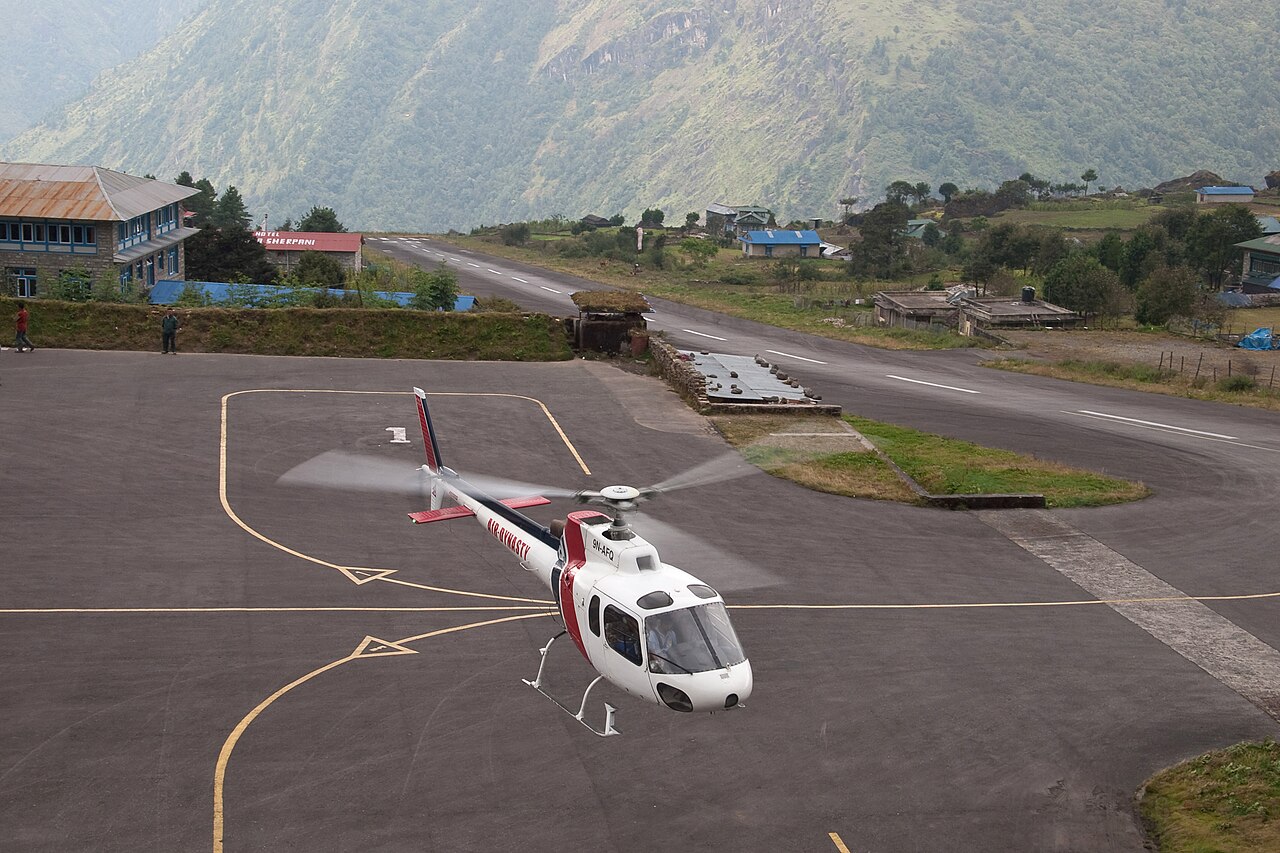
Photo: Vyacheslav Argenberg | Wikimedia Commons
Almost all operators use the AS350B3E for operations to and from Lukla. The Mi-17 is generally for transportation of heavy goods. An AS350B3E was also able to land at the top of Everest. It was known as “the mystery chopper” and took off to Everest from Lukla Airport.
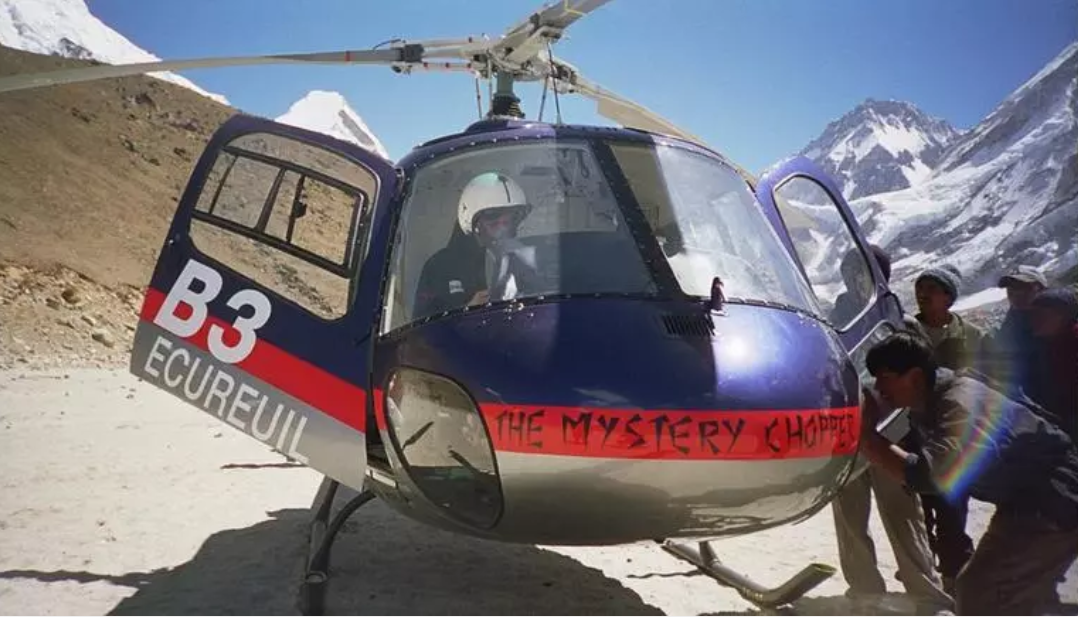
Photo: Airbus
Lukla Airport: Alternatives in the Everest region
Syangboche Airport is a now-defunct aerodrome where helicopters like the Mi-17 land for delivering heavy goods. Regular passenger operations don’t take place. Yeshi Tshering Sherpa, a native of Khumjung said that when she was a child, passenger operations from Syangboche to Phaplu took place during the weekends.
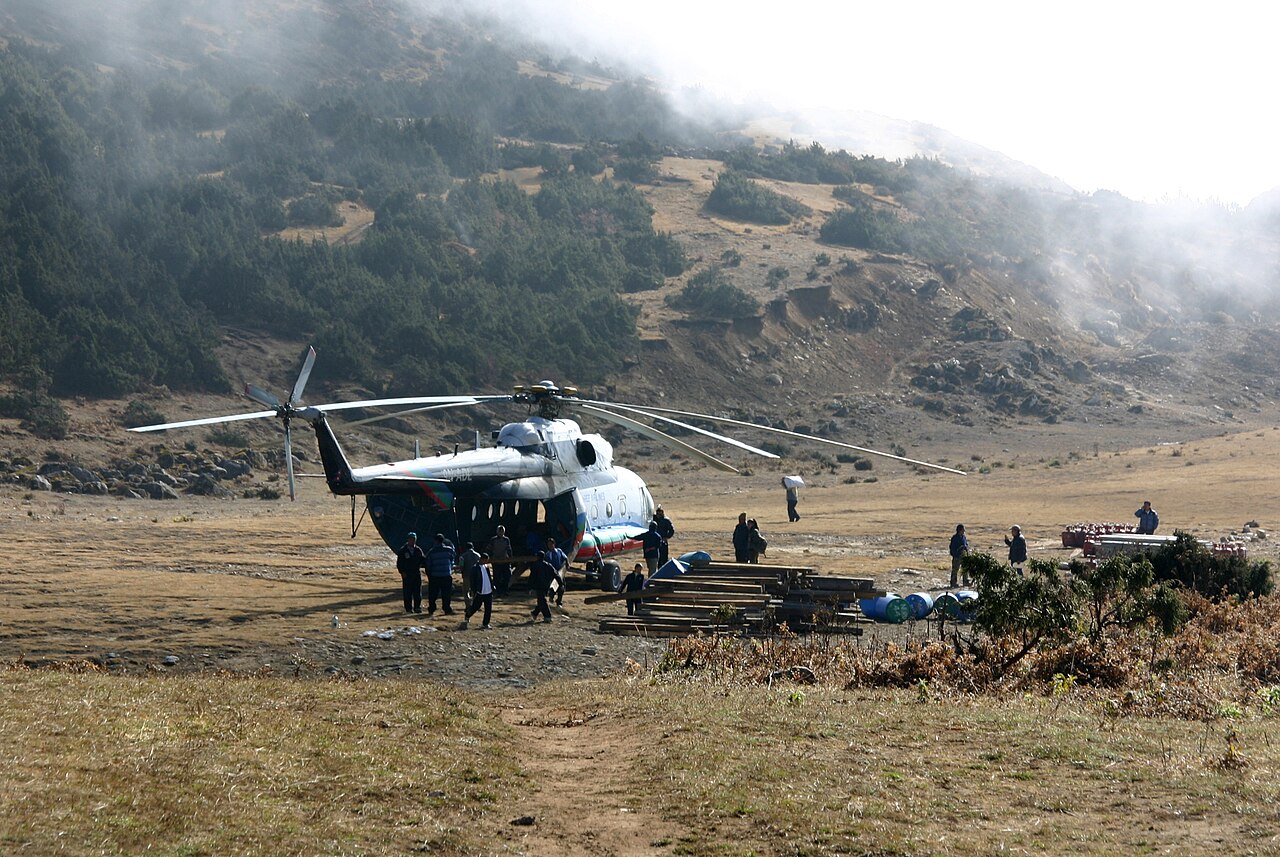
Photo: Gerd Eichmann | Wikimedia Commons
Ceiling operations do take place in Syangboche aerodrome regularly.
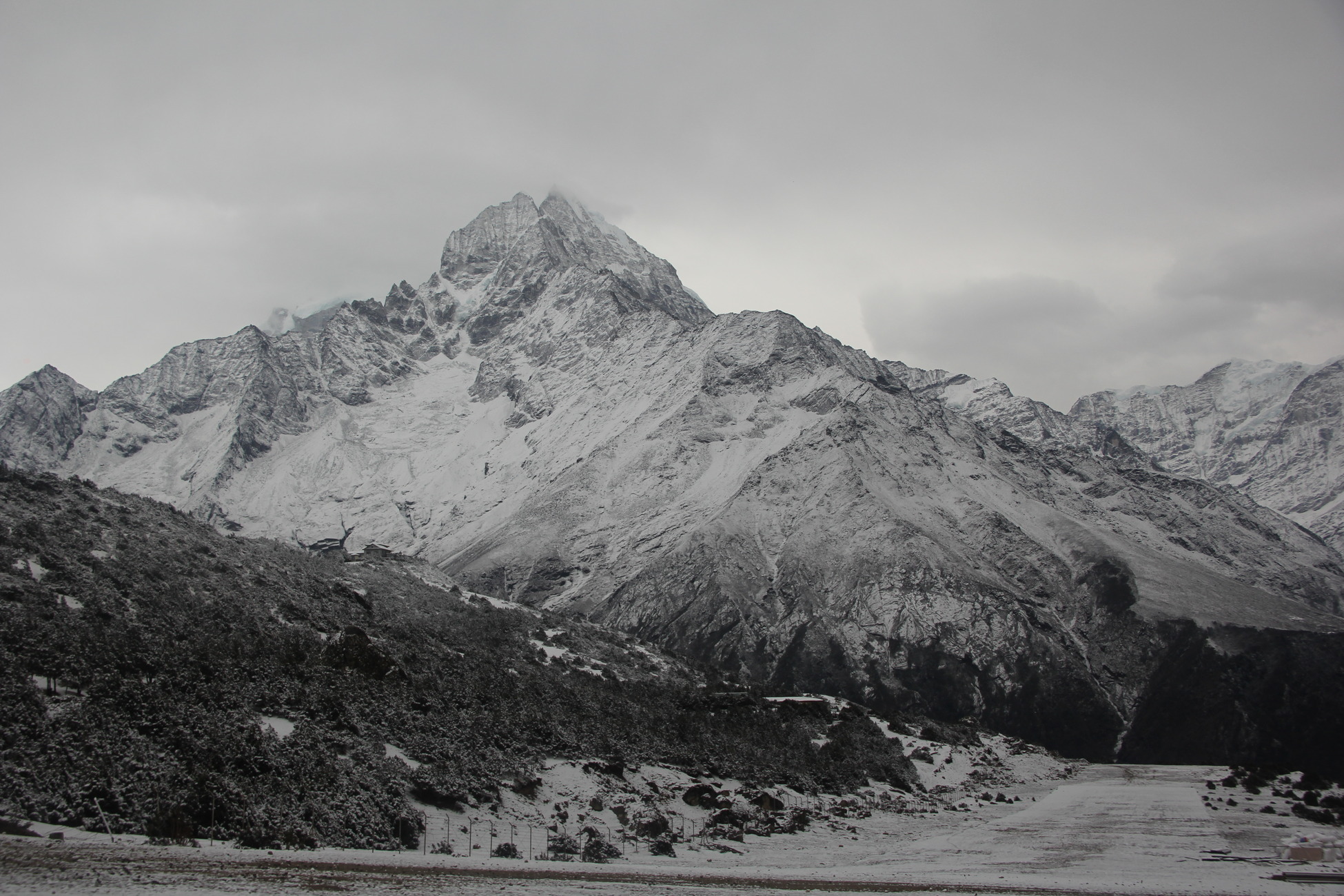
Photo: Karan Bhatta | aviospace.org
There were vehement protests in Lukla when news about regular passenger/cargo operations to Syangboche Airport surfaced.
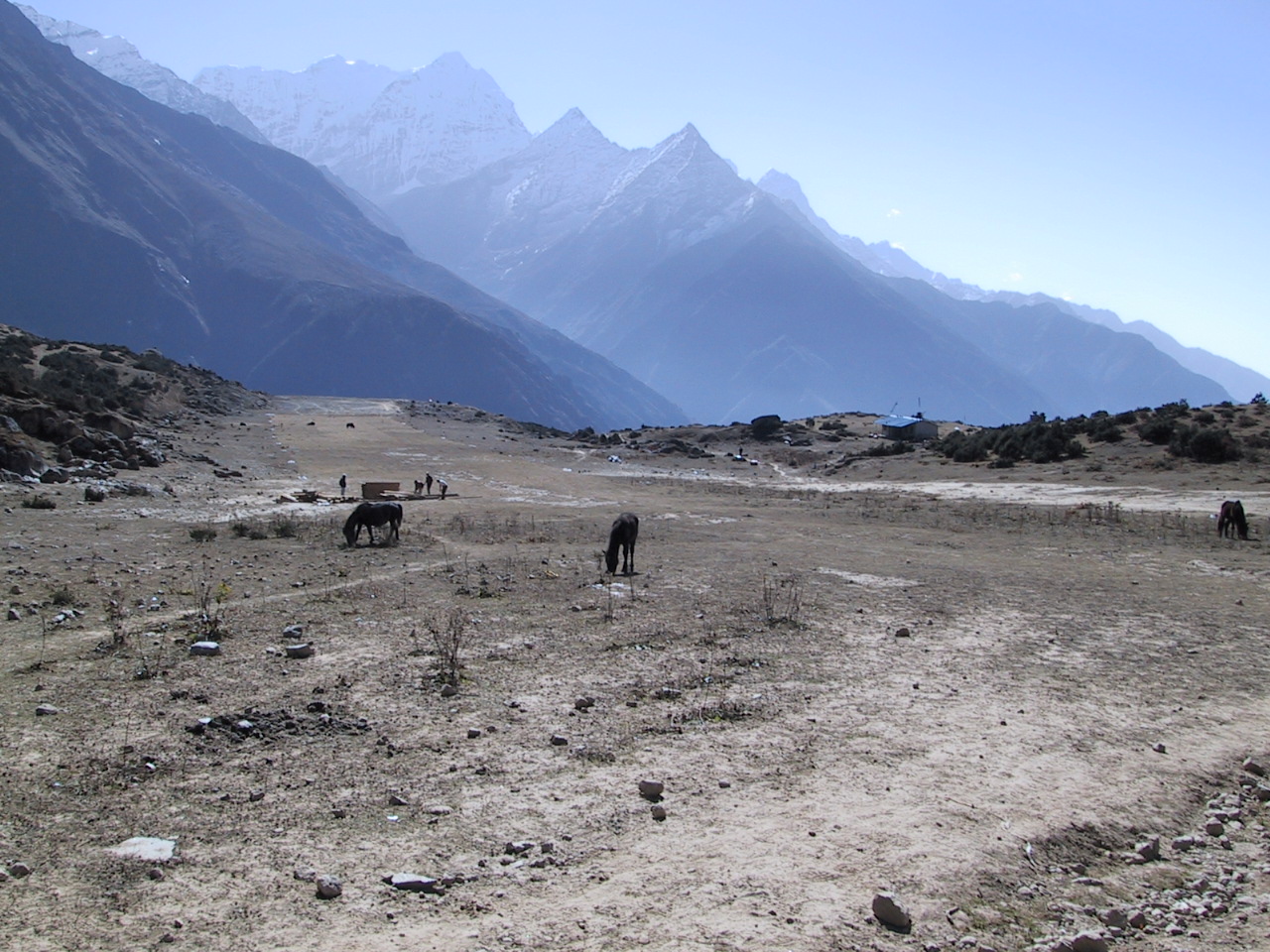
Photo: Ivan G. Somlai
Much like how Lukla Airport was a grazing field for cows in Lukla in the past, Syangboche is a pasture for horses in Syanboche. The airport is defunct for fixed-wing operations.
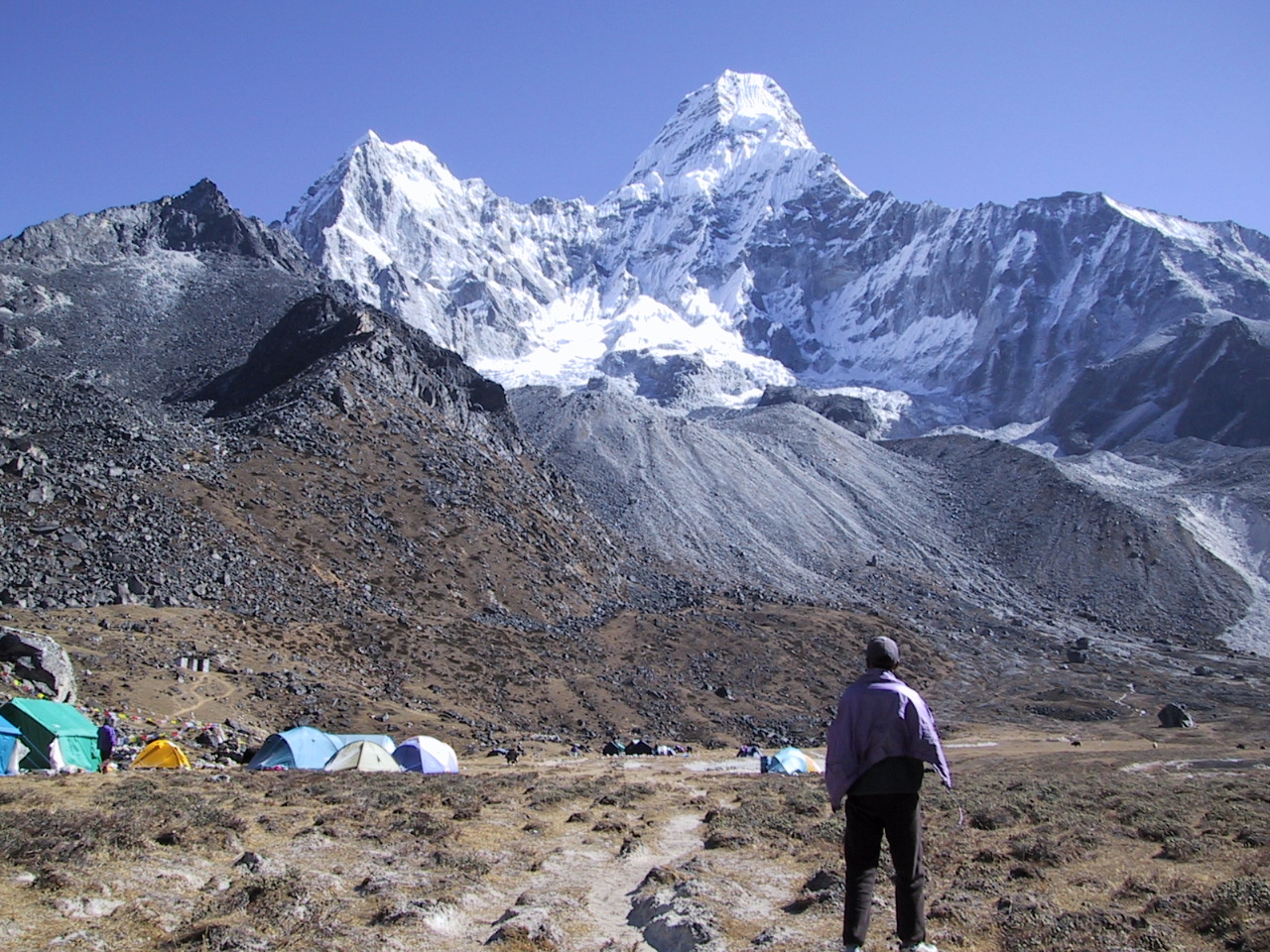
Photo: Ivan G. Somlai
The airstrip in Mingbo was the first Short Take off and Landing (STOL)port constructed by Sir Edmund Hillary. According to his accounts, the experiences of flights to and from Mingbo were more dangerous than those in Lukla.
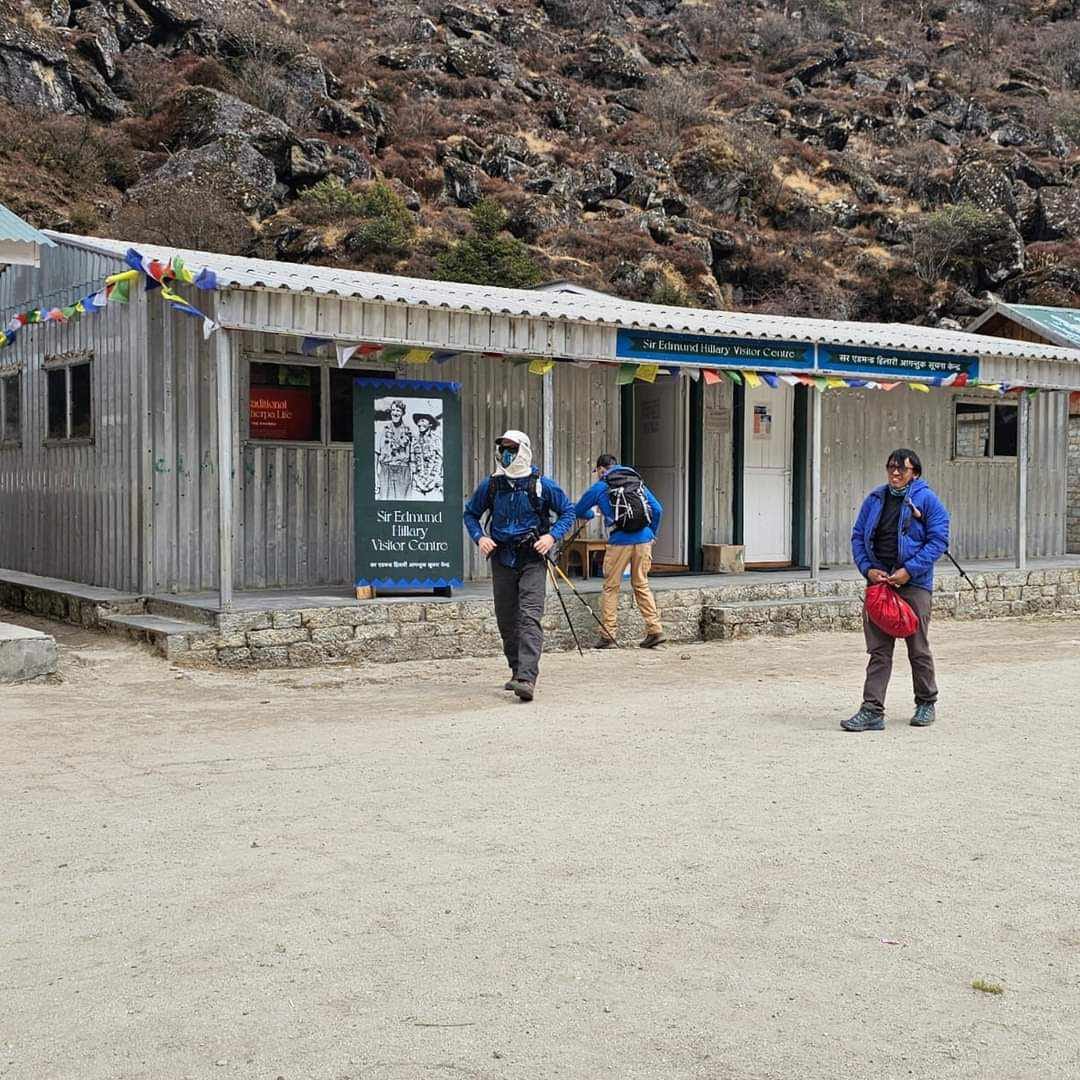
Photo: Karan Bhatta | aviospace.org
The operations in Mingbo airstrip brought essential supplies for the construction of Khumjung School, alongside carrying relief for Tibetan refugees.

Photo: Chhutin Sherpa | aviospace.org
People set up camps in the Mingbo airstrip during expeditions. Goods are transported to this region in the As350 B3Es. Captain Surendra Paudel also says that out of all the airports in the Everest region, topographically atleast, Mingbo is the most picturesque.

Photo: Chhutin Sherpa | aviospace.org

A De Havilland Canada DHC-6-300 Twin Otter 9N-ABT operated by Nepal Airlines landing at Phaplu Airport
photo: Rucksackschule-dresden|Wikimedia commons
Phaplu Airport is the only viable alternative to Lukla, as this is the only airport besides Lukla (in Solukhumbu) that sees regular passenger operations. Nepal Airlines doesn’t have regular passenger operations to Phaplu anymore.
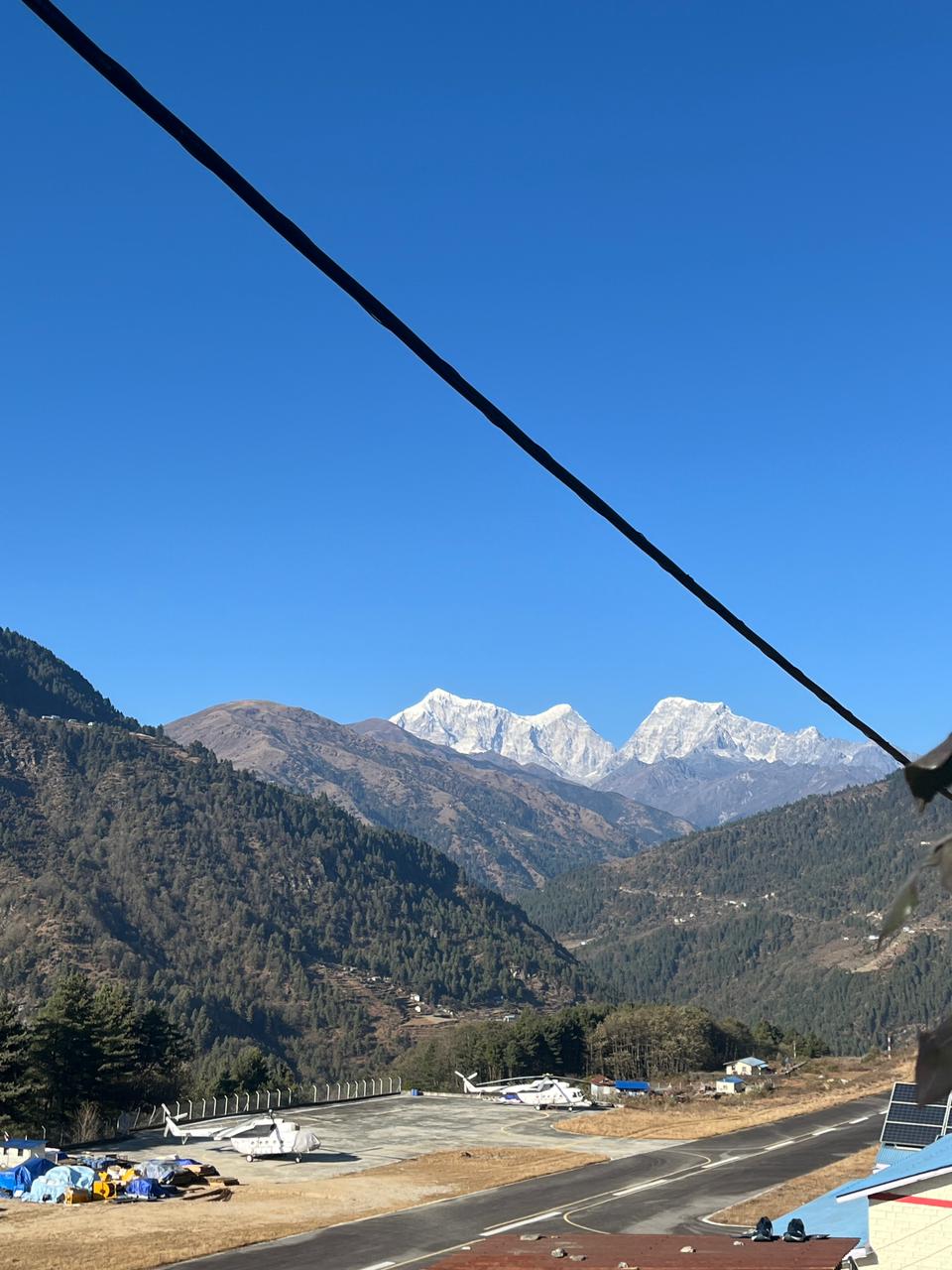
Image: Chhutin Sherpa | aviospace.org
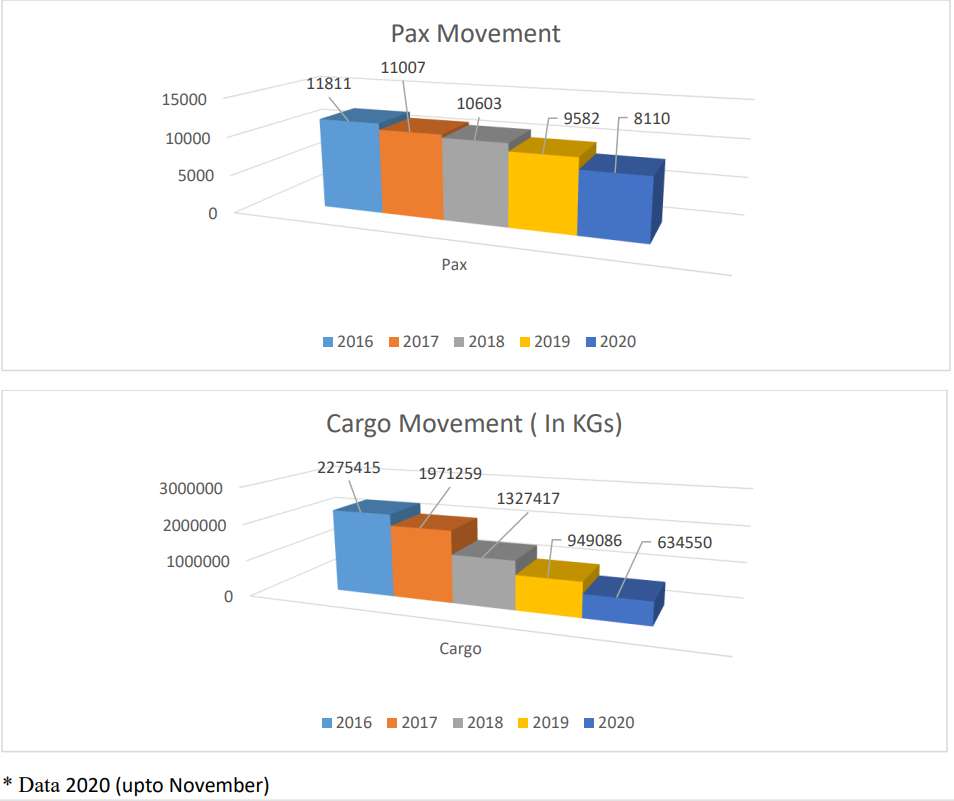
The image above [from the Civil Aviation Authority of Nepal (CAAN)] shows how operations to Phaplu have only decreased. Nonetheless, Phaplu Airport remains one of the most picturesque airstrips in Nepal.

Senior Pilot (trainer) Rabindra Dangol says that he finds operations in Phaplu Airport (in the picture above) much more challenging than Lukla.
All airlines that operate(d) in Lukla
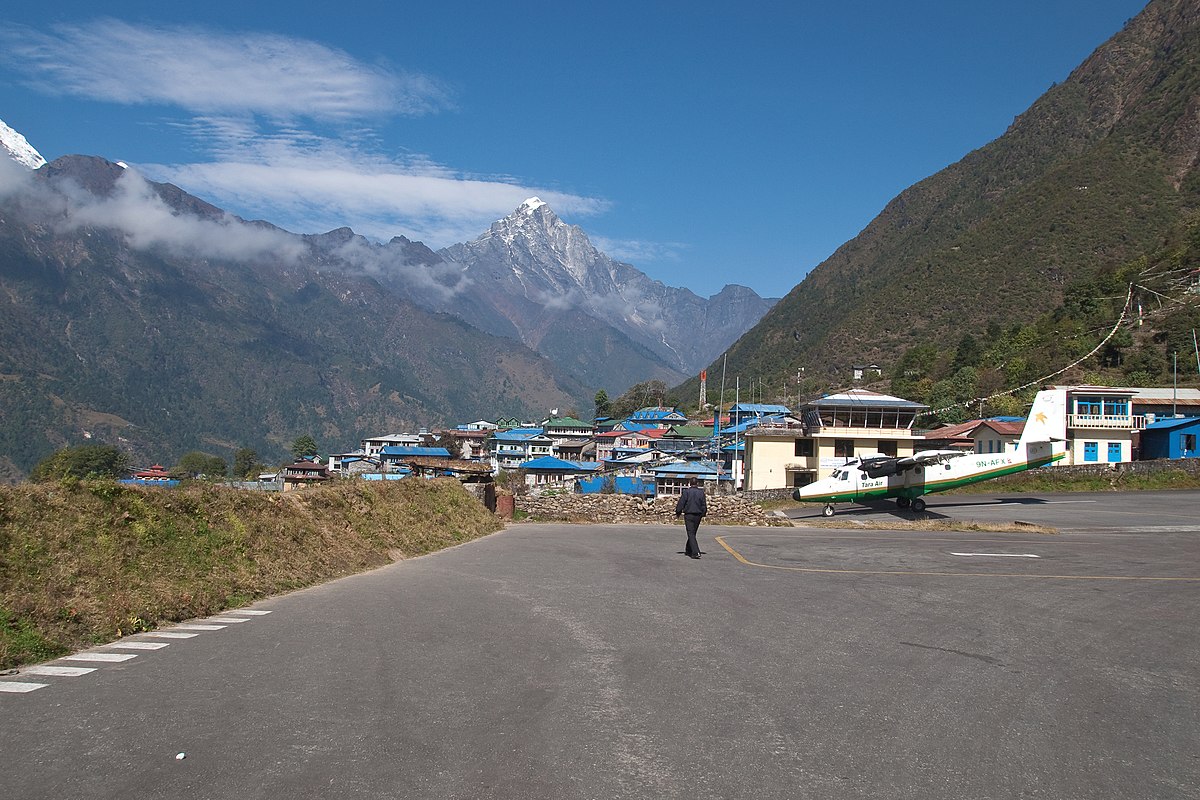
A DHC-6 Twin Otter operated by Tara Air about to take-off in Lukla Airport.
Khumbiulaa is the mountain in the middle of the image. Lhakpa Dorje Sherpa, a local of Khumbu district, which is home to the Tenzing Hillary airport, sait that because the mountain is considered the region’s divine being, many avoid climbing it.
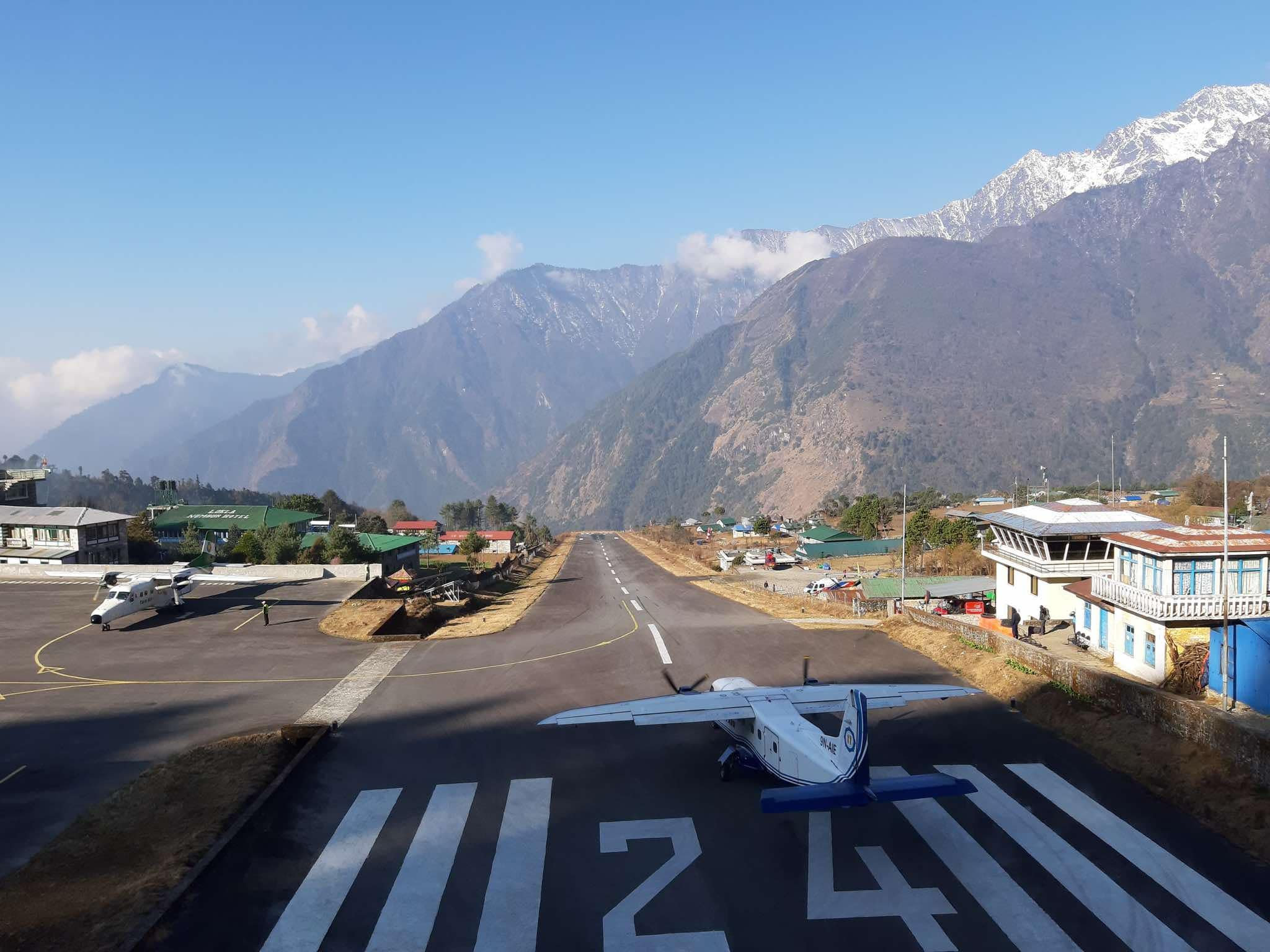
Image: Roland | aviospace.org
The airport is capable of accommodating four aircraft simultaneously. Sita Air currently operates Dornier Do-228s in the altiport of Lukla.
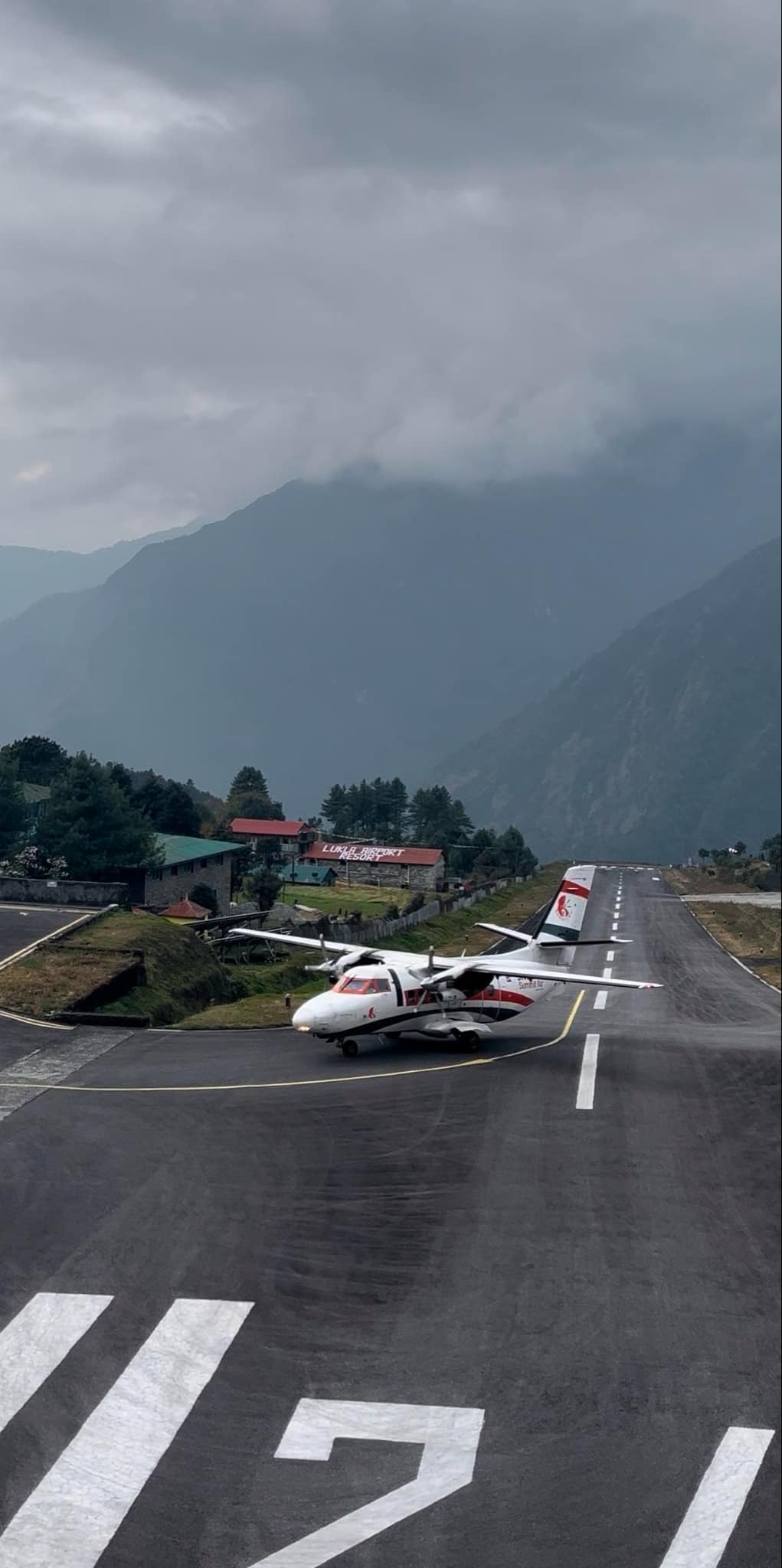
Photo” Chhutin Sherpa | aviospace.org
Summit Air operates the Let L-410 Turbolet to/ from Lukla Airport.
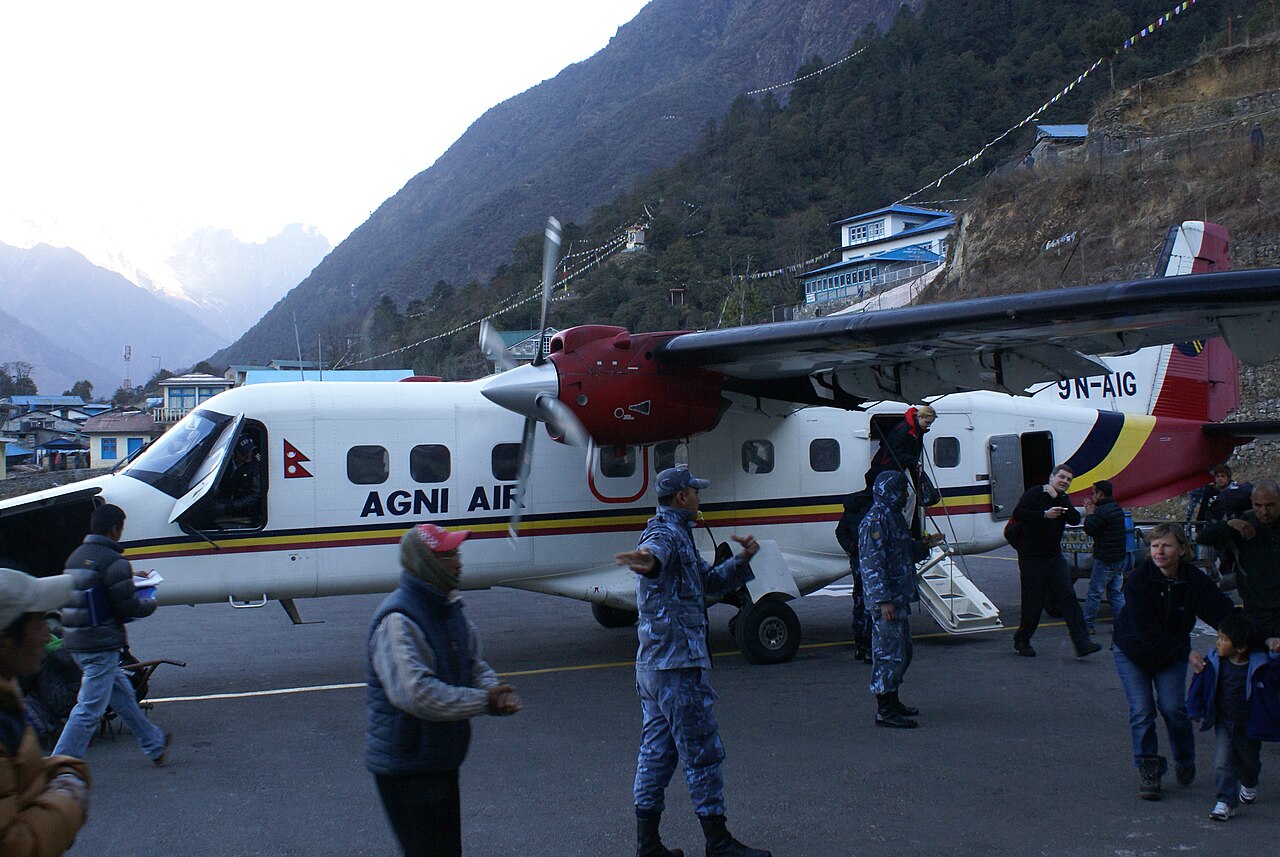
Agni Air, a now-defunct airline, used to operate Dornier Do-228s to Lukla.
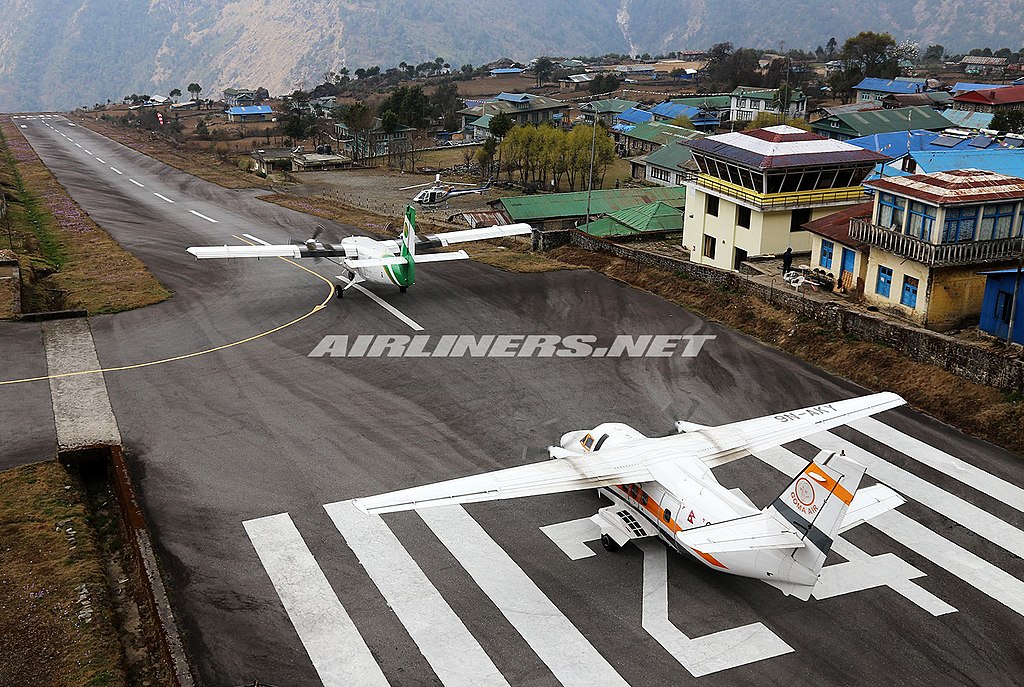
Photo: Timo Breidenstein | Wikimedia Commons
One of the airlines that used to operate in Lukla was Goma Air, which now known as Summit Air. Goma Air’s Let L-410 Turbolet registered 9N-AKY (in the picture above) suffered a crash in Lukla in 2017. Incidentally, this was the very year that Goma changed its name to Summit.
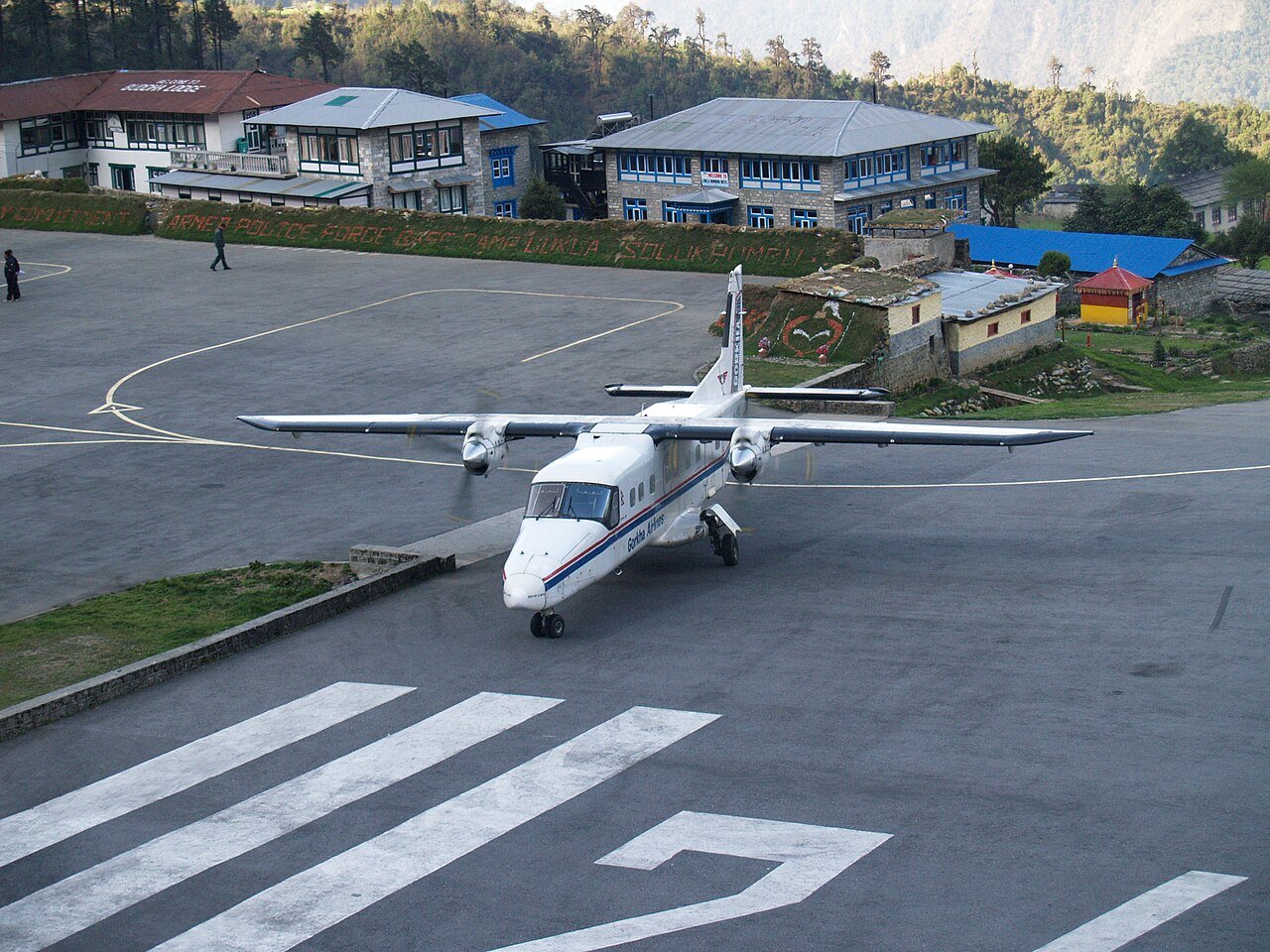
Another airlines that used to operate in Lukla was Gorkha Airlines (in the picture above). Its Do-228 registered 9N-AEO skidded of the runway in Lukla in 2005, and the aircraft was written off subsequently. There were no fatalities in the incident though.
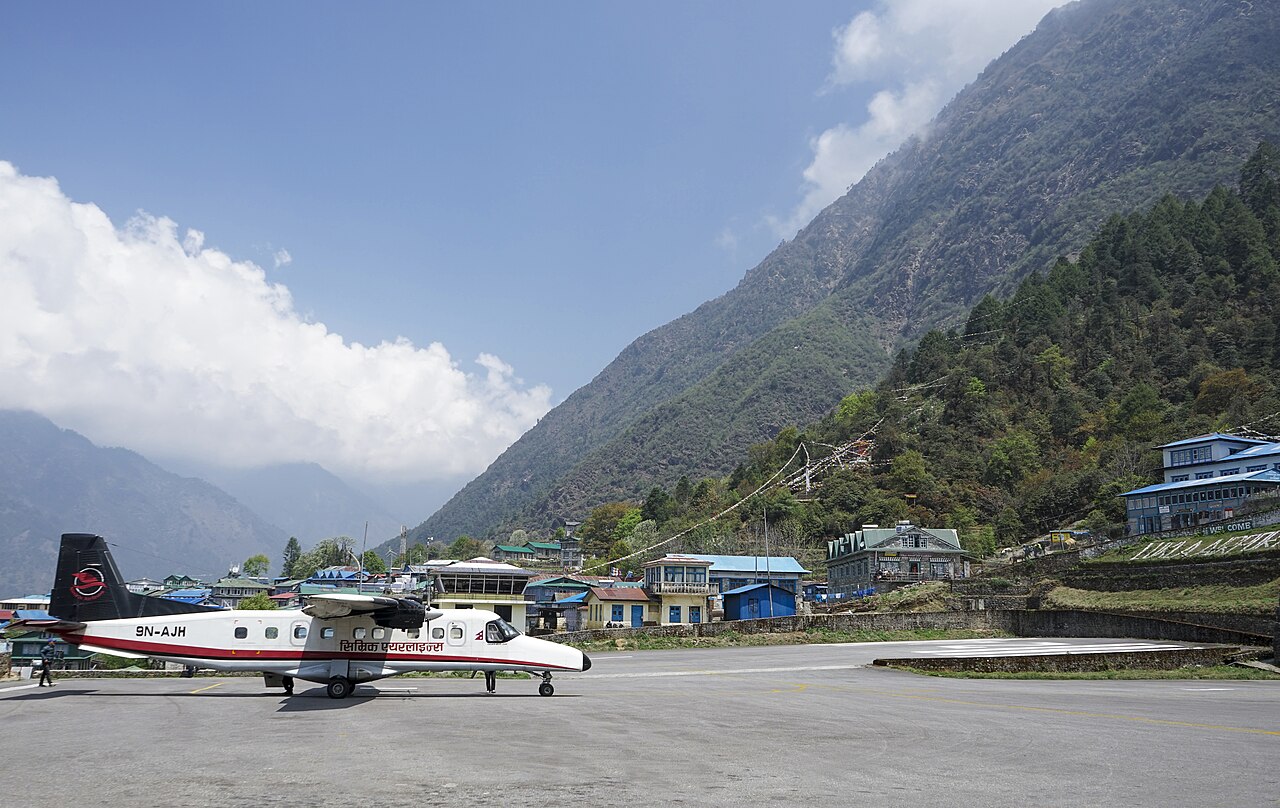
A Dornier Do-228 operated by Simrik Airlines in Lukla. The carrier’s aircraft of this type later were acquired by Sita Air.
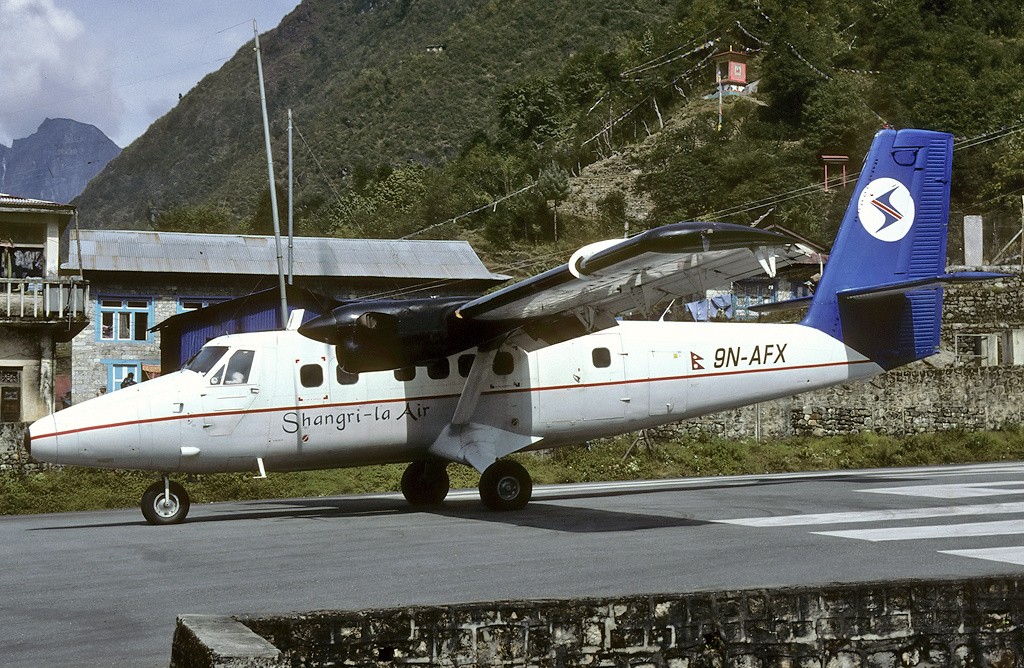
Photo: Richard Vandervord | Wikimedia Commons
This aircraft registered 9N-AFX was later sold by Shangri-la Air to Yeti Airlines. But following a crash that took the lives of 22 passengers onboard, this particular aircaft was written off.
Crashes in the most dangerous airport in the world
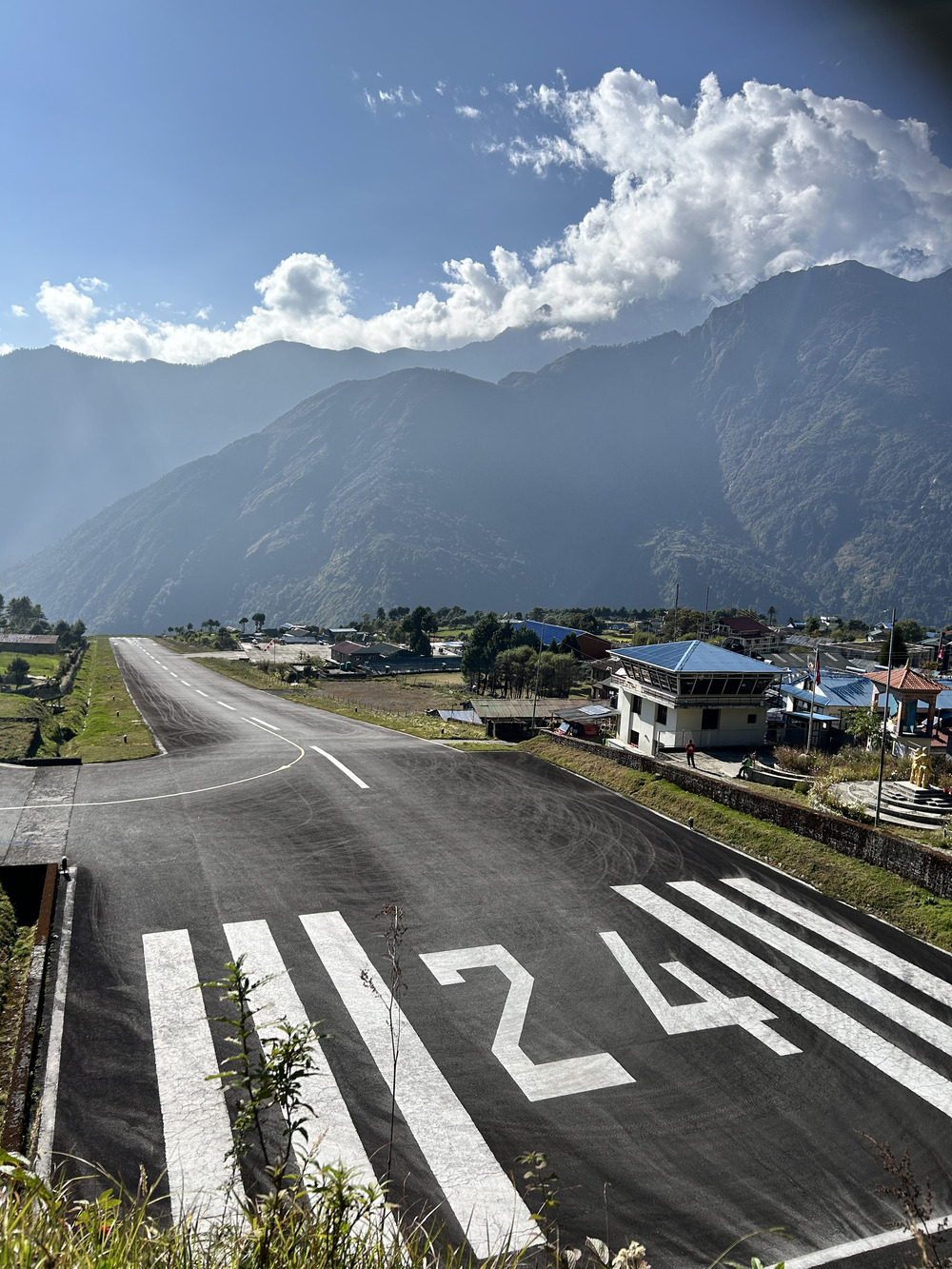
Runway 24, regarded as one of the most dangerous in the world. According to Ujjwal Tiwari, an ATC with extensive experience operating in the country’s STOLports, Lukla might not even be the most dangerous in Nepal, let alone in the world. Regardless, some accidents have taken place in the region.
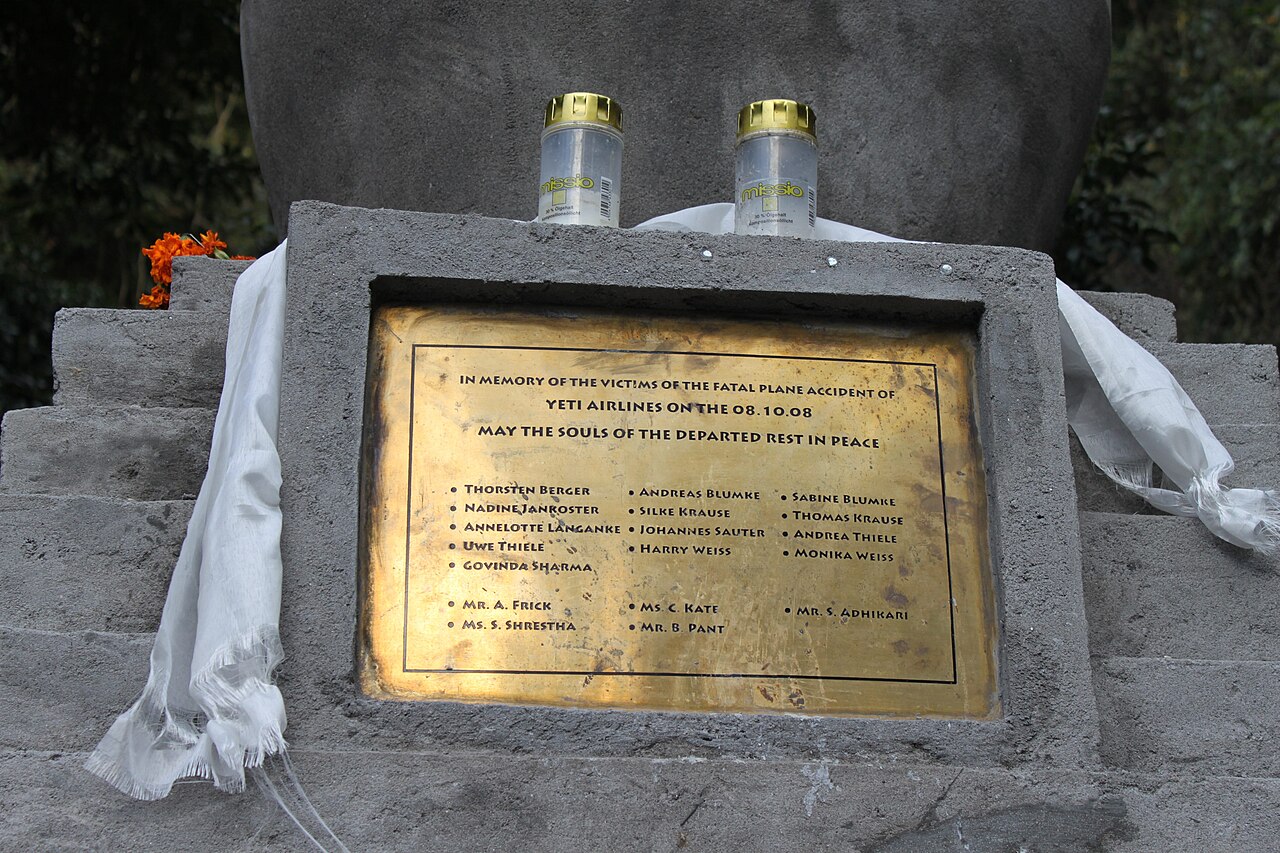
Photo: Superikonoskop | Wikimedia Commons
18 people lost their lives in the crash of Yeti Airlines’ DHC-6 300 Twin Otter [registered 9N-AFE] in 2008. One of the causes of the crash was “Failure on the part of regulatory body and company safety management to check the wrong practices being followed by pilots especially in STOL airfields like Lukla on a timely basis.”
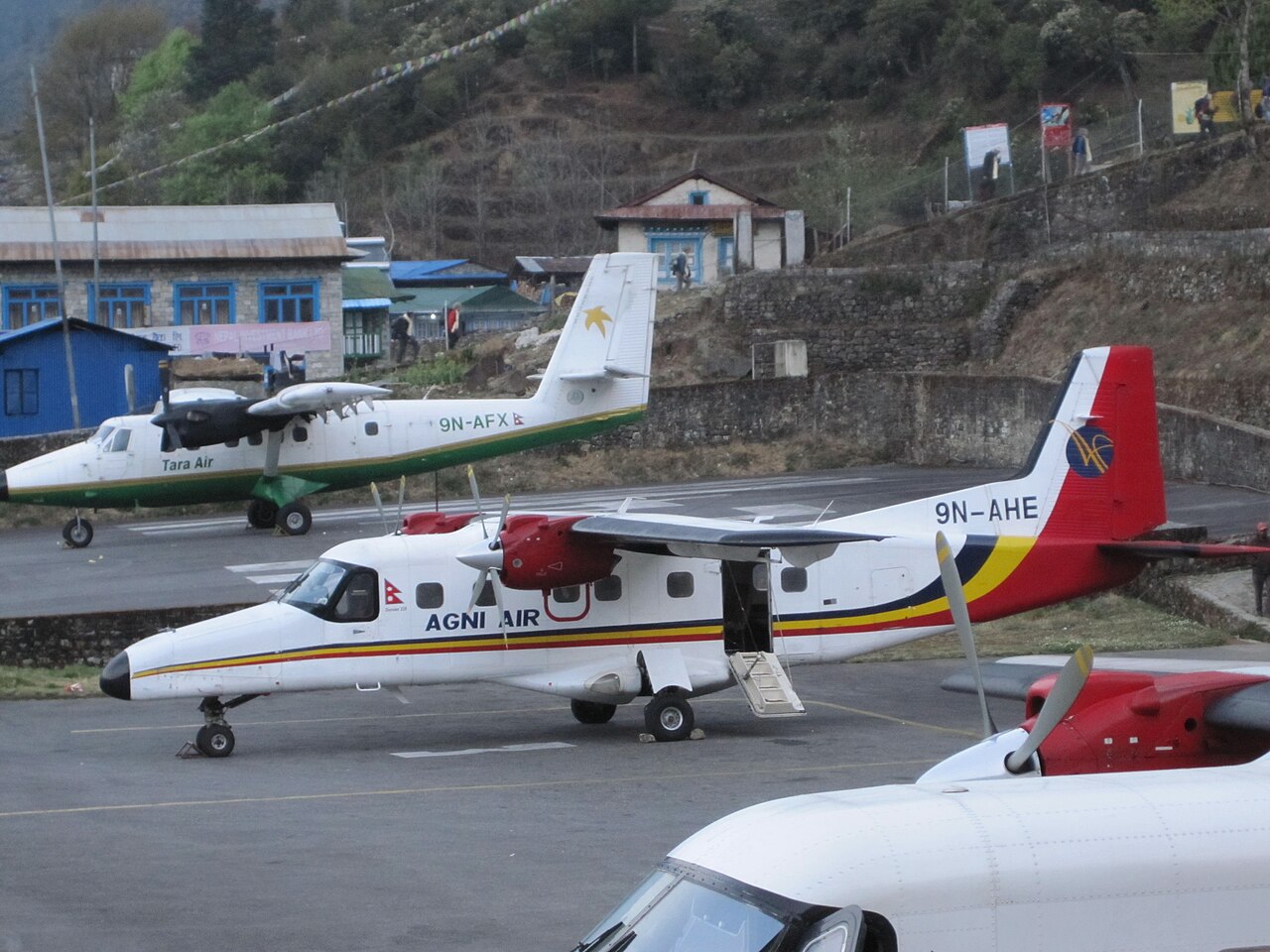
This aircraft registered 9N-AHE was written off completely after it crashed hillside near Bastipur, in Makwanpur district, killing all fourteen on board. The aircraft was headed to Lukla from Kathmandu.
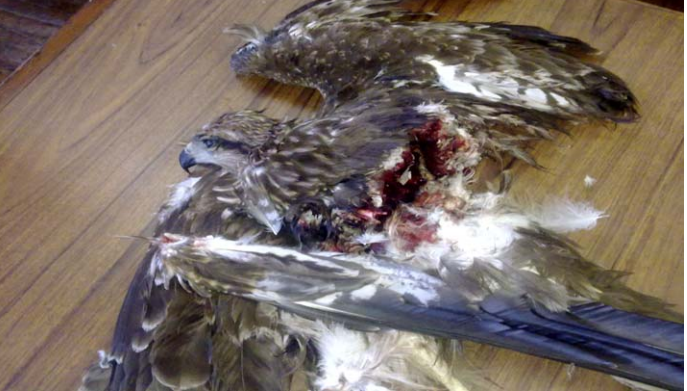
When Sita Air’s Dornier Do-228 registered 9N-AHA crashed very shortly after takeoff from Kathmandu International Airport [to Lukla Airport], it was found that the aircraft had met a bird strike.

The investigation of the crash of 9N-AKY operated by Goma Airlines revealed that the ATS officer had failed to close the airport (during deteriorating weather) as per the approved SOP. The following picture shows the weather conditions just before the crash:


In 2019, a L410UPV-E20 (registration 9N-AMH) operated by Summit Air first collided with Manang Air’s helicopter, AS350B3e (registration 9N-ALC) and then with Shree Airlines’ helicopter, AS350B3e (registration 9N-ALK). This was the last fatal accident in Lukla. After this accident, a separate helipad, right of the runway 06, was constructed in Lukla.
A few other interesting notes on the crucial gateway to Everest: the Hillary Airport
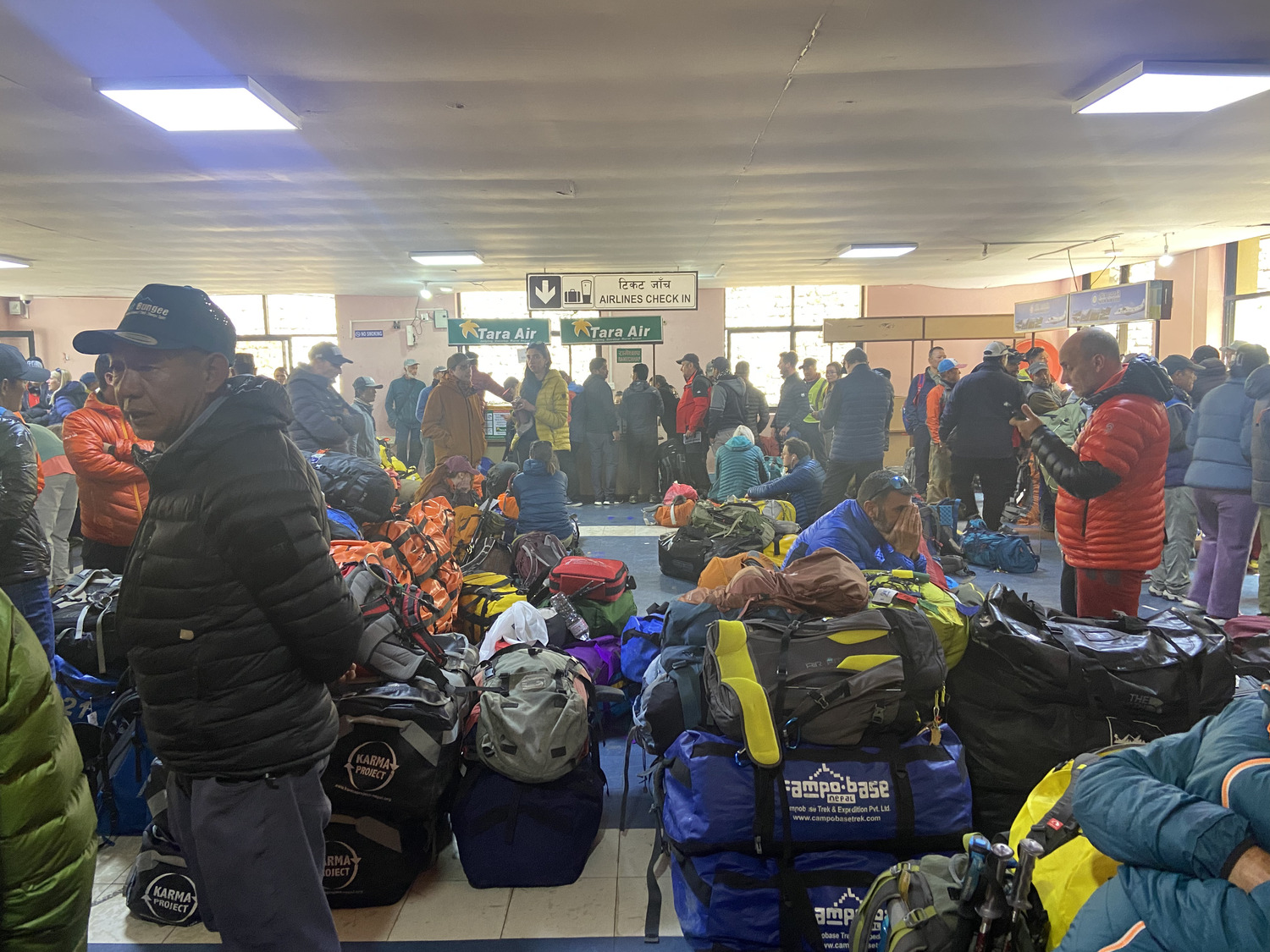
Photo: Karan Bhatta | aviospace.org
During peak seasons, air traffic controllers and airlines can face a busy time managing flights in and out of Lukla, as shown in the photo. Hundreds of tourists were waiting for their flights at Lukla Airport after flights were cancelled after a few days of bad weather.
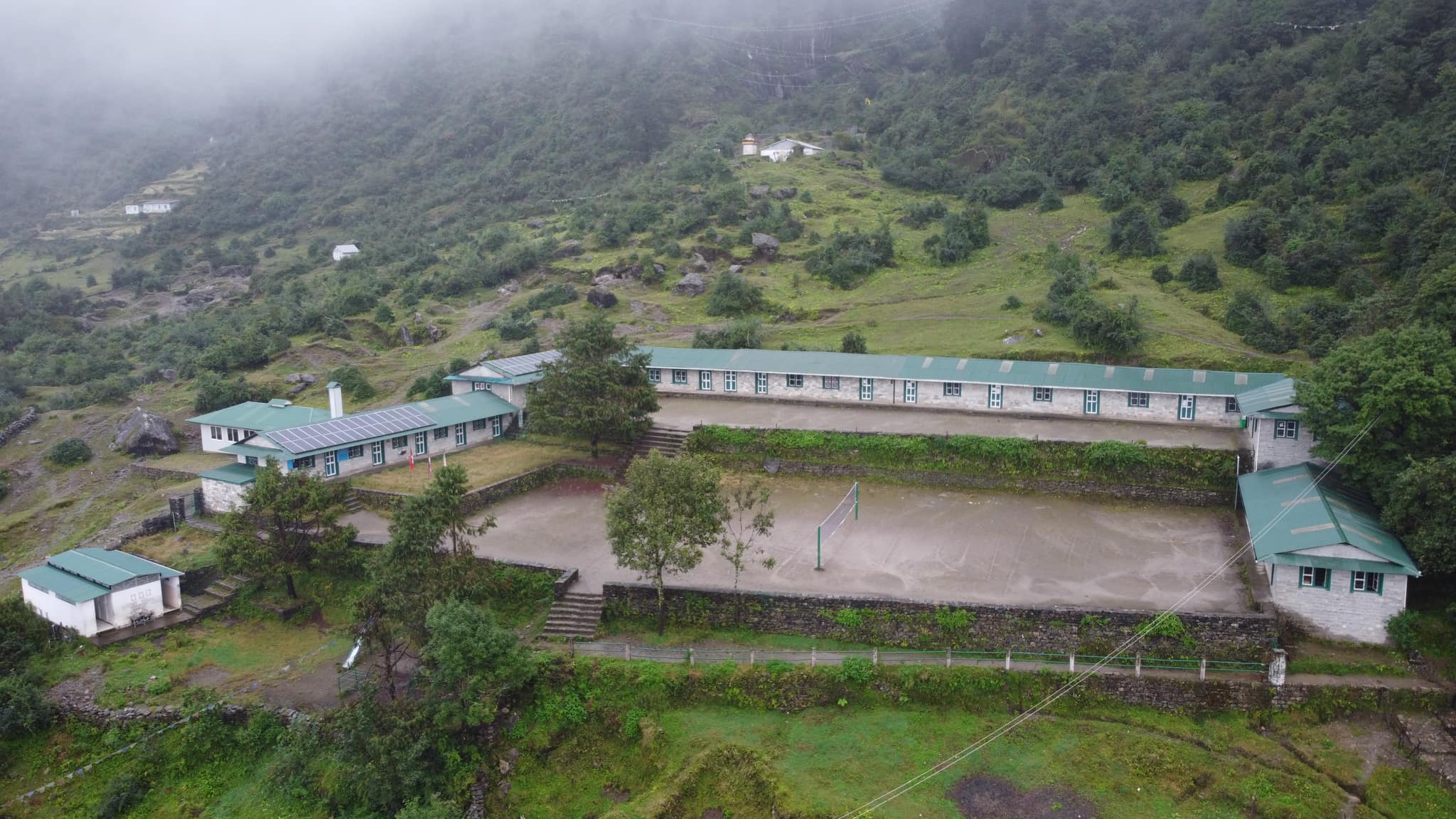
Lukla Basic School was established by Denis Bertholet in 1984. Students from other schools such as Khumjung who take their pivotal examinations of grade 10, have to commute to this school to take their Secondary Education Examination (SEE) tests.
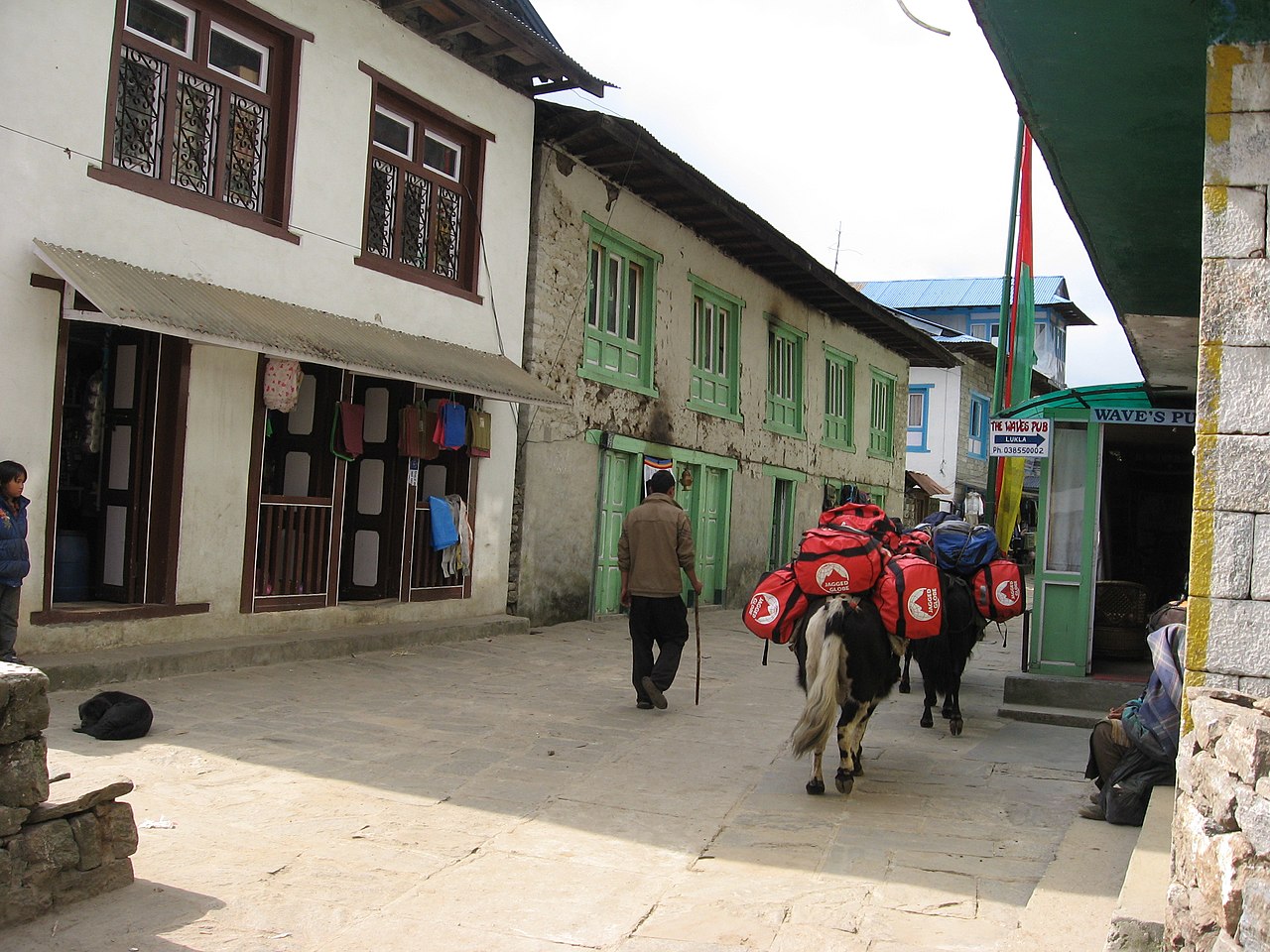
Image: Dario Severi | Wikimedia Commons
Although facilities of transportation through rotorcraft are available, zopkees and mules remain essential for transporting luggage (up to Everest Base Camp). Transportation of goods using these animals reduce the carbon footprint of flights – after all, there have been movements such as flygskam to make people aware of the environmental footprints of air travel.
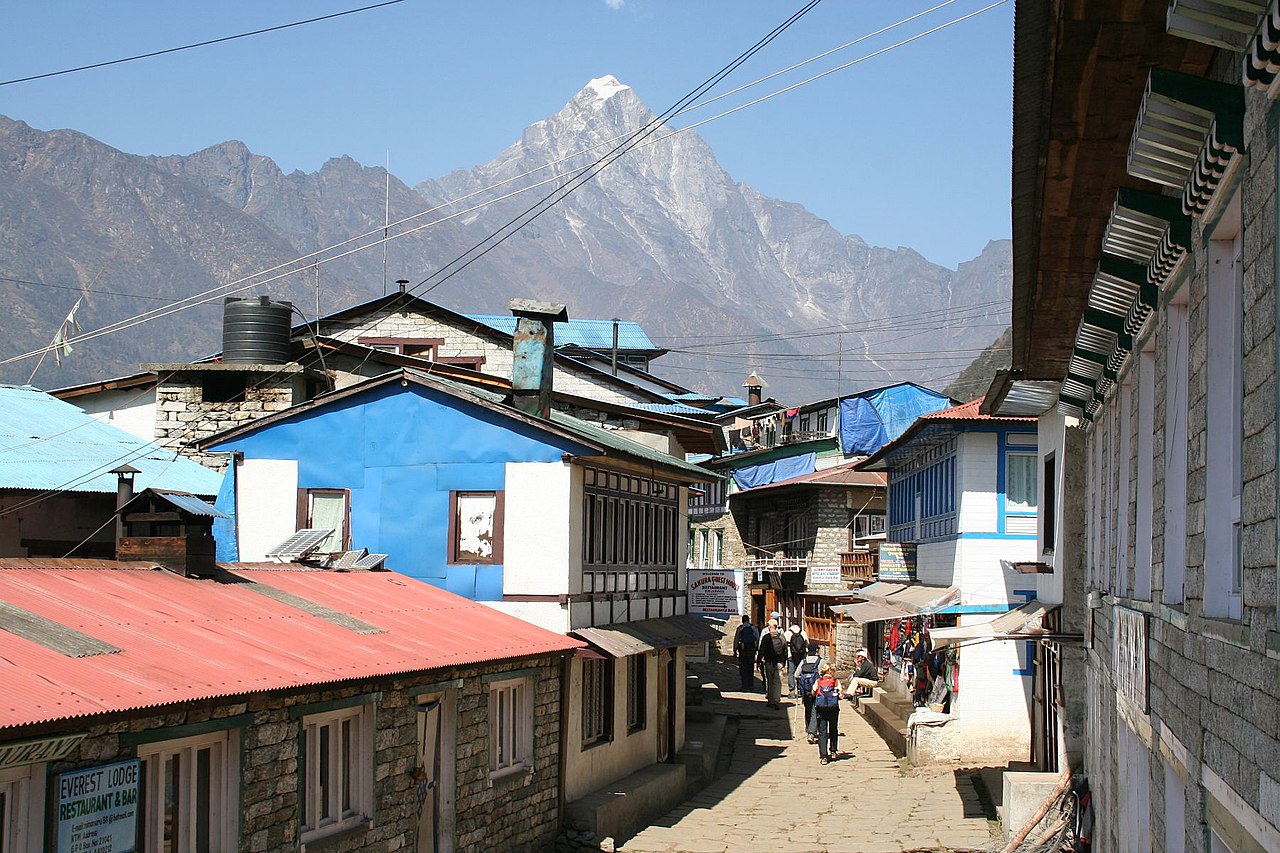
Image : Reinhard Kraasch | Wikimedia Commons
Many trips in the Everest region begin with hiking from Lukla. The trail meanders through deep forests, charming villages, and suspension bridges across thundering rivers.
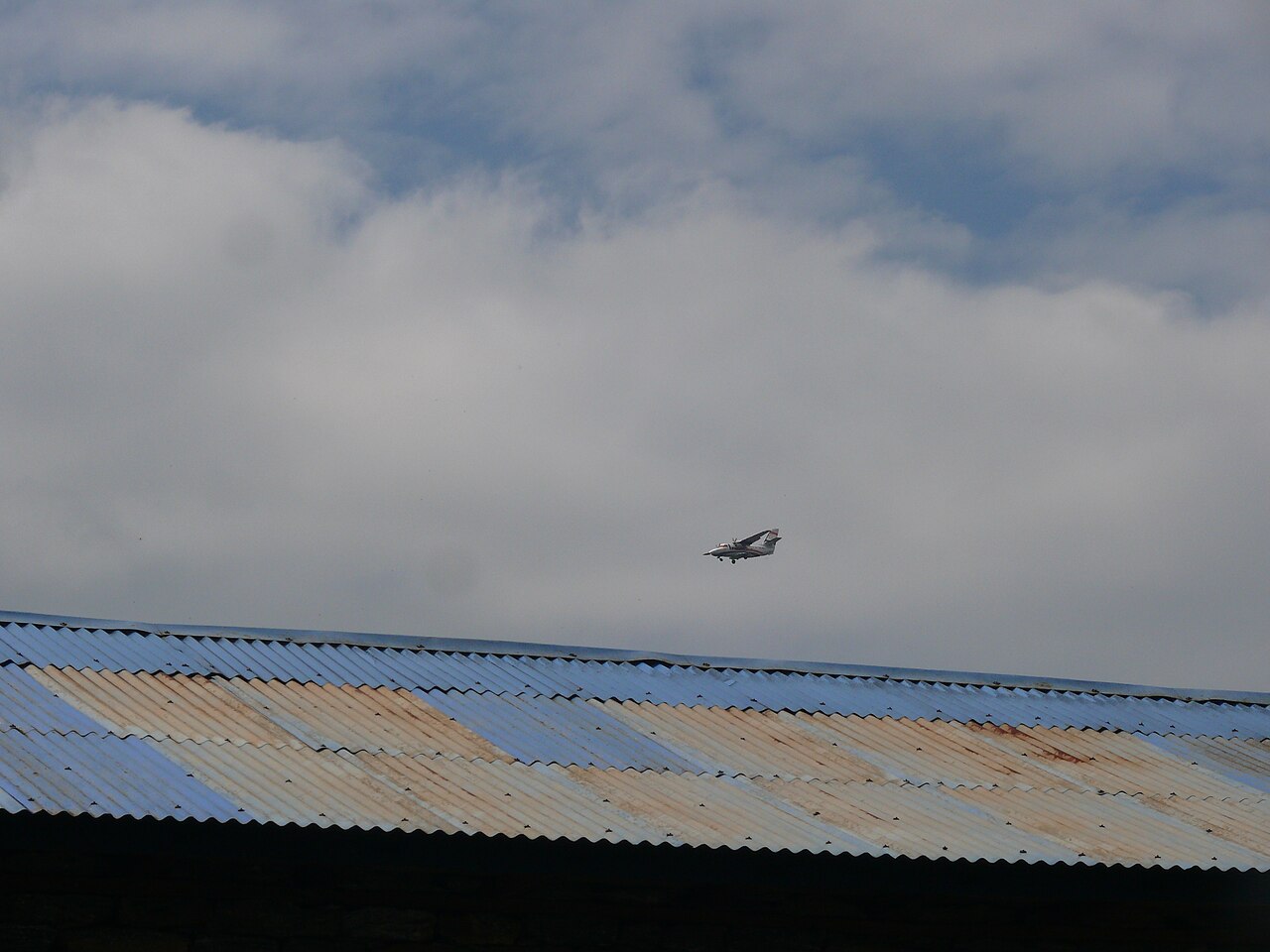
Image: Goutam 1962 | Wikimedia Commons
As the aircraft approaches a brief, sloping runway of Lukla encircled by majestic peaks, landing at Lukla Airport provides an exhilarating and unforgettable experience.
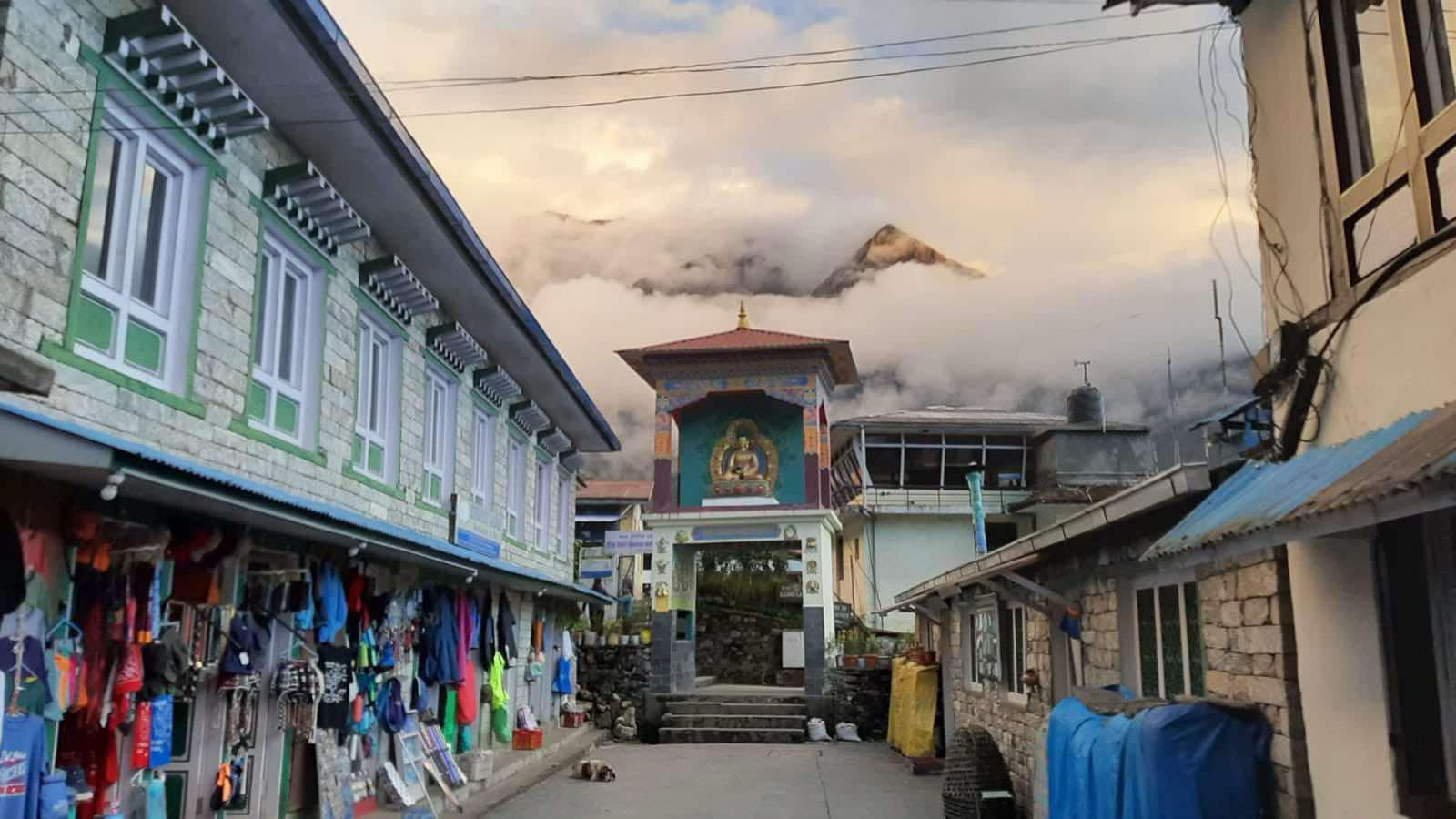
Image: Pasang Lama
This is where your trek to Everest Base Camp starts. A statue of Lord Buddha stands over the gate as you exit the periphery of Lukla Airport. Lord Buddha represents serenity and enlightenment and is a spiritual guide for many a people here.

Image : Pasang Lama
The magnificent Mera Mountain, known as the highest trekking mountain, is located behind Lukla Airport.

